SPANNING THE AGES
The Mysterious Feed Tag
Managing the Mane & Tail
PONYING AROUND THE INTER-PACIFIC
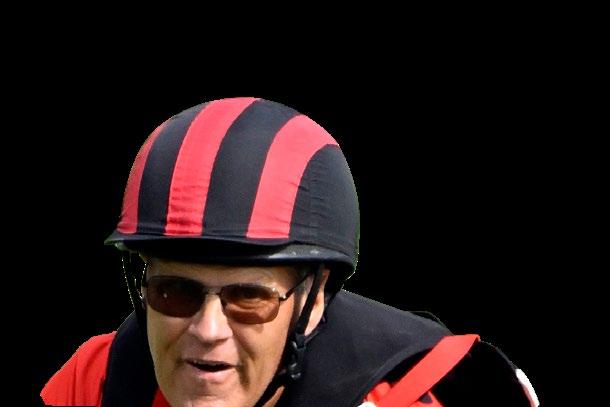
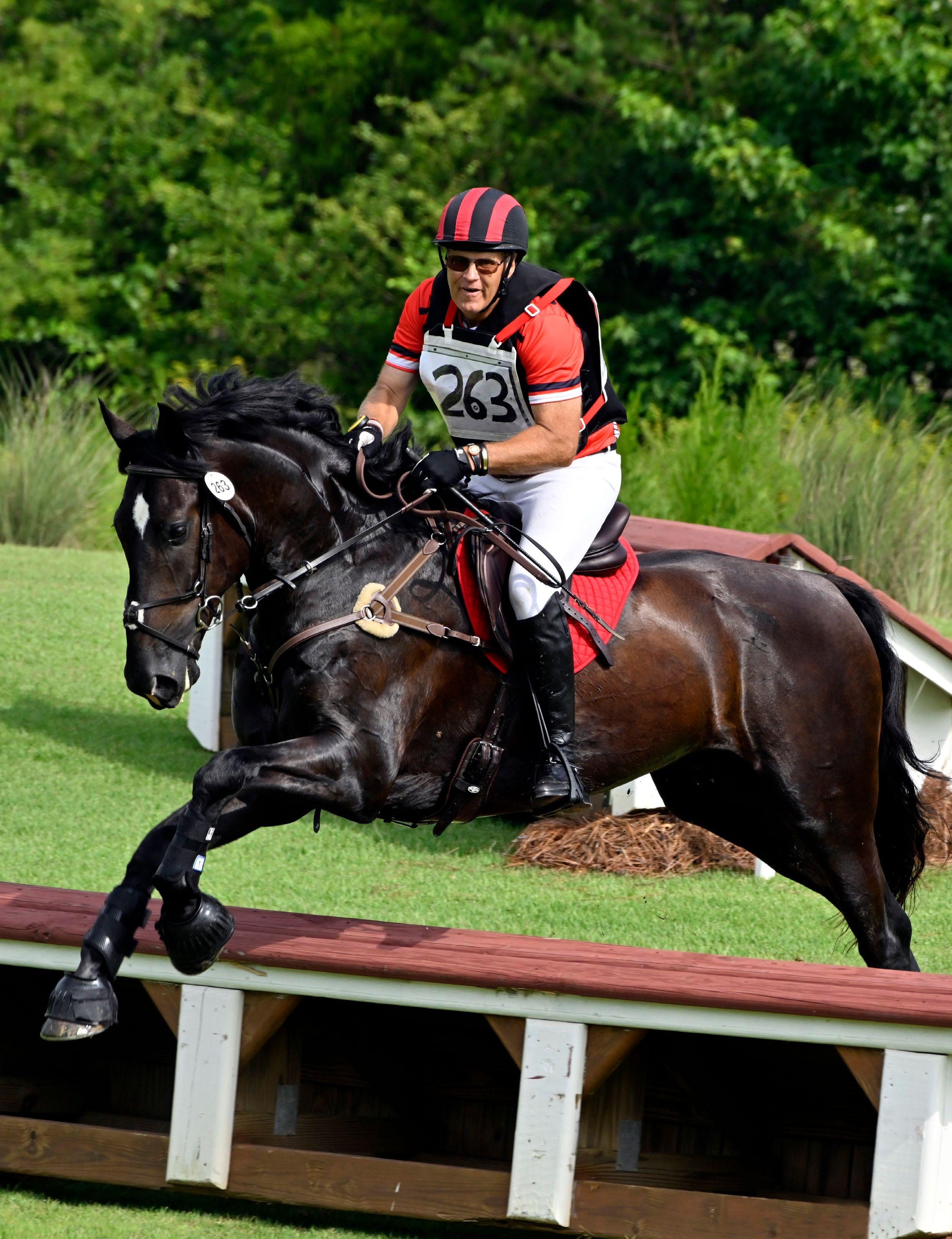
SPRING/SUMMER 2023 | NO. 167
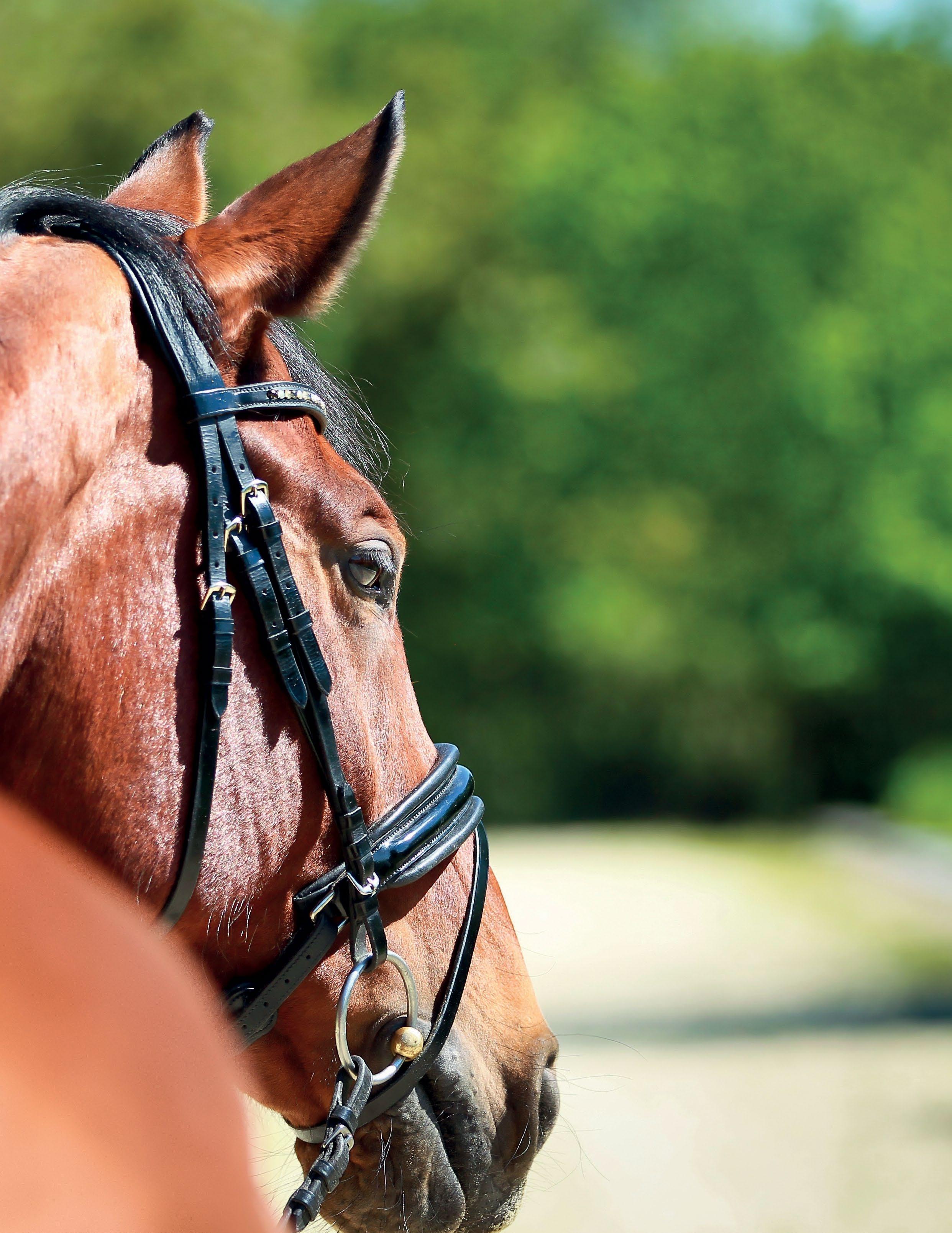
FREE Shipping on orders over $50* FREE Returns* WWW.COUNTRYANDSTABLE.COM *Terms and Conditions Apply
SPRING/SUMMER 2023
ISSUE NO. 167
President: Jennifer Sweet
Executive Director: Teresa Woods

Editor: Sarah Evers Conrad

DISCOVER USPC, The Official Magazine of the United States Pony Clubs, Inc. is published two to three times a year by The United States Pony Clubs, Inc. and mailed to Pony Club families and Corporate Members. Readers are encouraged to submit ideas or articles for publication. Address all correspondence to the Editor at the above address. USPC is not responsible for the opinions and statements in signed articles and paid advertisements. These opinions are not necessarily the opinions of USPC and its staff. Pony Club recognizes that equestrian headgear that does not meet USPC Policy #0810 is not safe, although certain equestrian activities pictured in this magazine may not adhere to these requirements. Change of address must be made six weeks before date of publication for next issue to be delivered to a new address. Address changes can be made to your USPC member profile online or by mail. POSTMASTER: Send address changes to United States Pony Clubs, 4041 Iron Works Parkway, Lexington, KY 40511-8483.
ABOUT ADVERTISING: Pony Club does not endorse any publication, service, or product, and reserves the right to refuse any advertising not in the best interest of USPC membership. Advertising in DISCOVER USPC, The Official Magazine of The United States Pony Clubs, Inc. does not imply any such endorsement; nor does Pony Club warrant as to the accuracy of any claims made by such advertisements that claim to meet Pony Club needs or requirements. Advertising does not necessarily reflect the standards and practices of Pony Club.
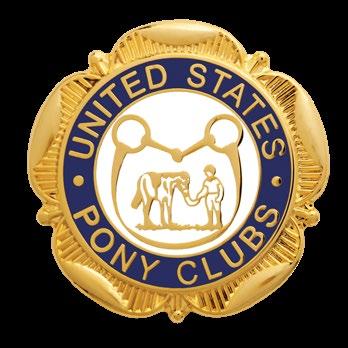
PUBLICATION EDITORS, NOTE: Unless cited as having been reprinted from another publication, permission to reproduce any article or other editorial content published in DISCOVER USPC, The Official Magazine of The United States Pony Clubs, Inc. must be requested from the Editor at communications@ ponyclub.org and with the condition that credit is given as follows: Reprinted from (issue date) DISCOVER USPC, The Official Magazine of The United States Pony Clubs, Inc. with permission of the United States Pony Clubs.
© 2023 The United States Pony Clubs, Inc. All rights reserved. Reproduction in whole or in part without permission is prohibited. No rights for commercial use or exploitation are given or implied. DISCOVER USPC are trademarks of The United States Pony Clubs, Inc. registered in the U.S. Patent and Trademark Office.
CORPORATE SPONSORS
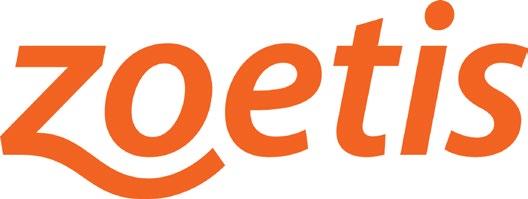
website: ponyclub.org

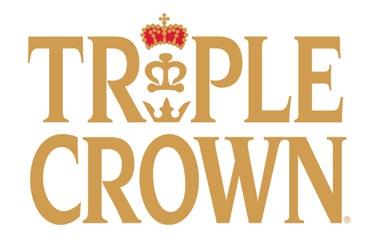
uspc@ponyclub.org
inquiries@ponyclub.org
shopponyclub@ponyclub.org
marketing@ponyclub.org
communications@ponyclub.org
development@ponyclub.org
executivedirector@ponyclub.org
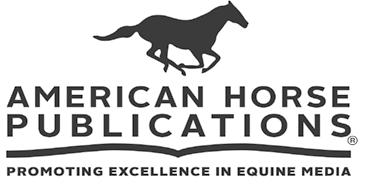
memberservices@ponyclub.org
instruction@ponyclub.org
activities@ponyclub.org
testing@ponyclub.org
advertising@ponyclub.org
ISSN 2767-1860 (Print)
ISSN 2767-1887 (Online)

1 DISCOVER USPC ponyclub.org
4041
Member Publication
PUBLISHED BY THE UNITED STATES PONY CLUBS, INC.
IRON WORKS PARKWAY | LEXINGTON, KY 40511-8483 | OFFICE 859-254-7669
Departments
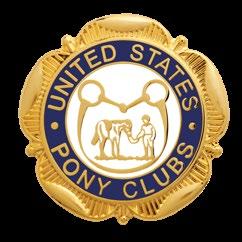

Features
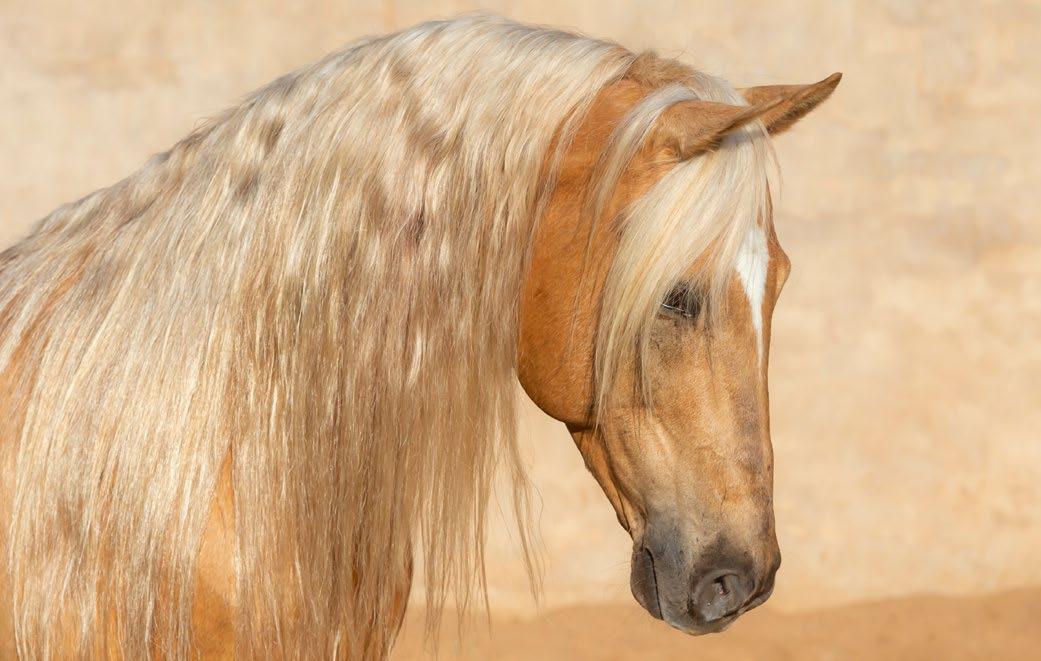
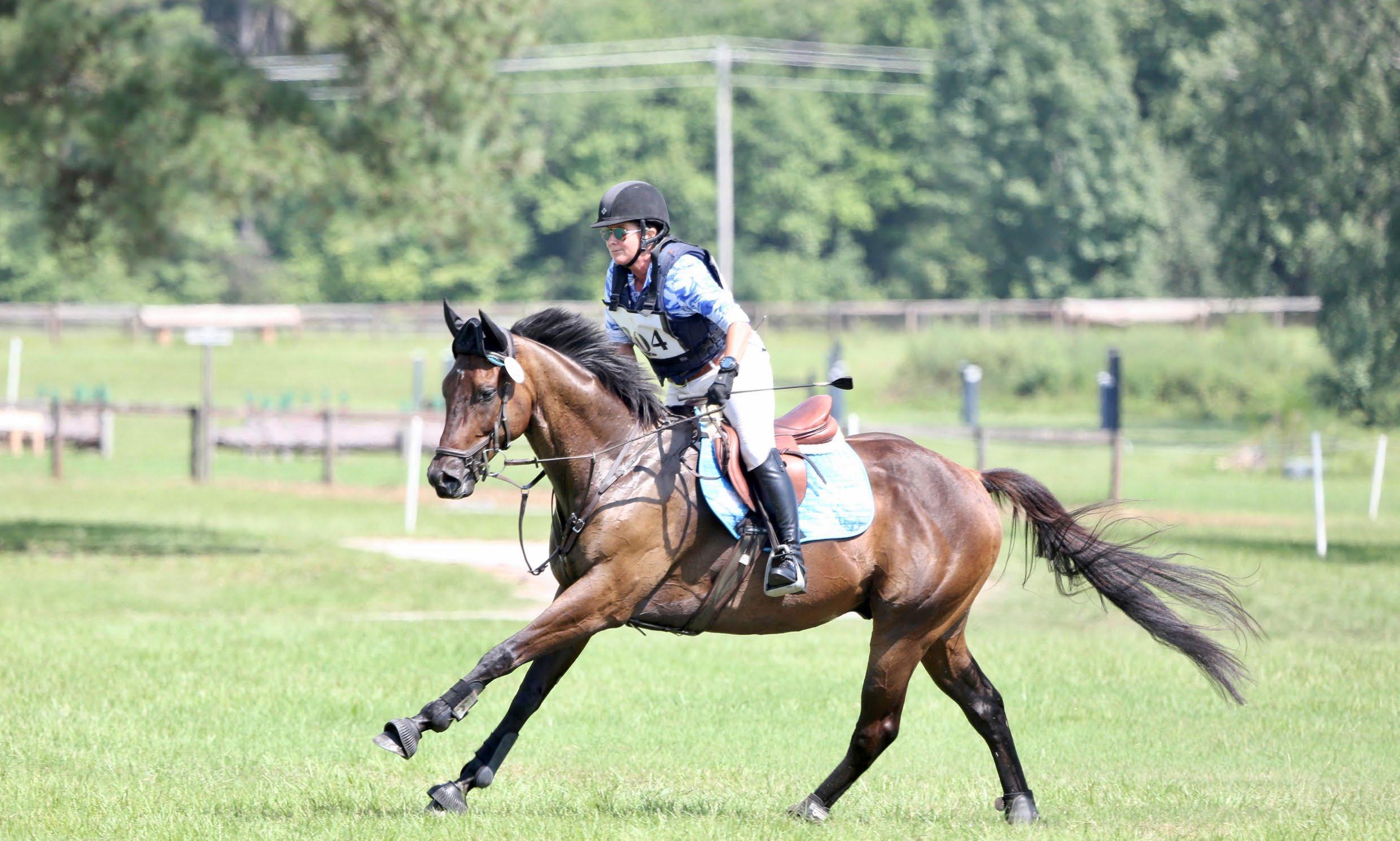
2 DISCOVER USPC Spring/Summer 2023 4 LETTERS FROM THE EXECUTIVE DIRECTOR AND PRESIDENT 6 BITS & PIECES 8 JUST FOR FUN 32 PONY CLUB PICTURE PADDOCK 12 MEMBER SPOTLIGHT: BELLA FIELD 18 ST. LOUIS CELEBRATION Catch all the happenings from the 2023 USPC Convention. 26 GROOMING GOALS: MANE & TAIL MANAGED 30 NUTRITION NOTES: WHAT DOES A FEED TAG TELL YOU? 14 SPANNING THE AGES Hear from adult members participating in Pony Club. 10 NEW EXPERIENCES FOR EVERY EQUESTRIAN Try these methods to jazz up your mounted and unmounted meetings. 24 PONYING AROUND THE INTER-PACIFIC On
Jaco Wiid/Shutterstock Erin Roland/USPC High Time Photography TABLE OF CONTENTS
the Cover: Donald Ruths, H-A Eventing, of St. Margaret’s Pony Club in the Delmarva Region, aboard Raven at the 2022 USPC Championships East. Photo by GRC Photo LLC
26 18 14
EQUESTRIAN CENTER
JOIN US AT THE BARN!
• Founded in 1869, Stoneleigh-Burnham School (SBS) is a boarding and day school for girls in Grades 7-12 and Postgraduate (PG).

• Located in historic Greenfield, Massachusetts, SBS has been a member of the Interscholastic Equestrian Association (IEA) since its official inception in 2002.

• The School boasts five National Titles featuring Middle School and Upper School IEA teams that compete within the largest zone in the country.
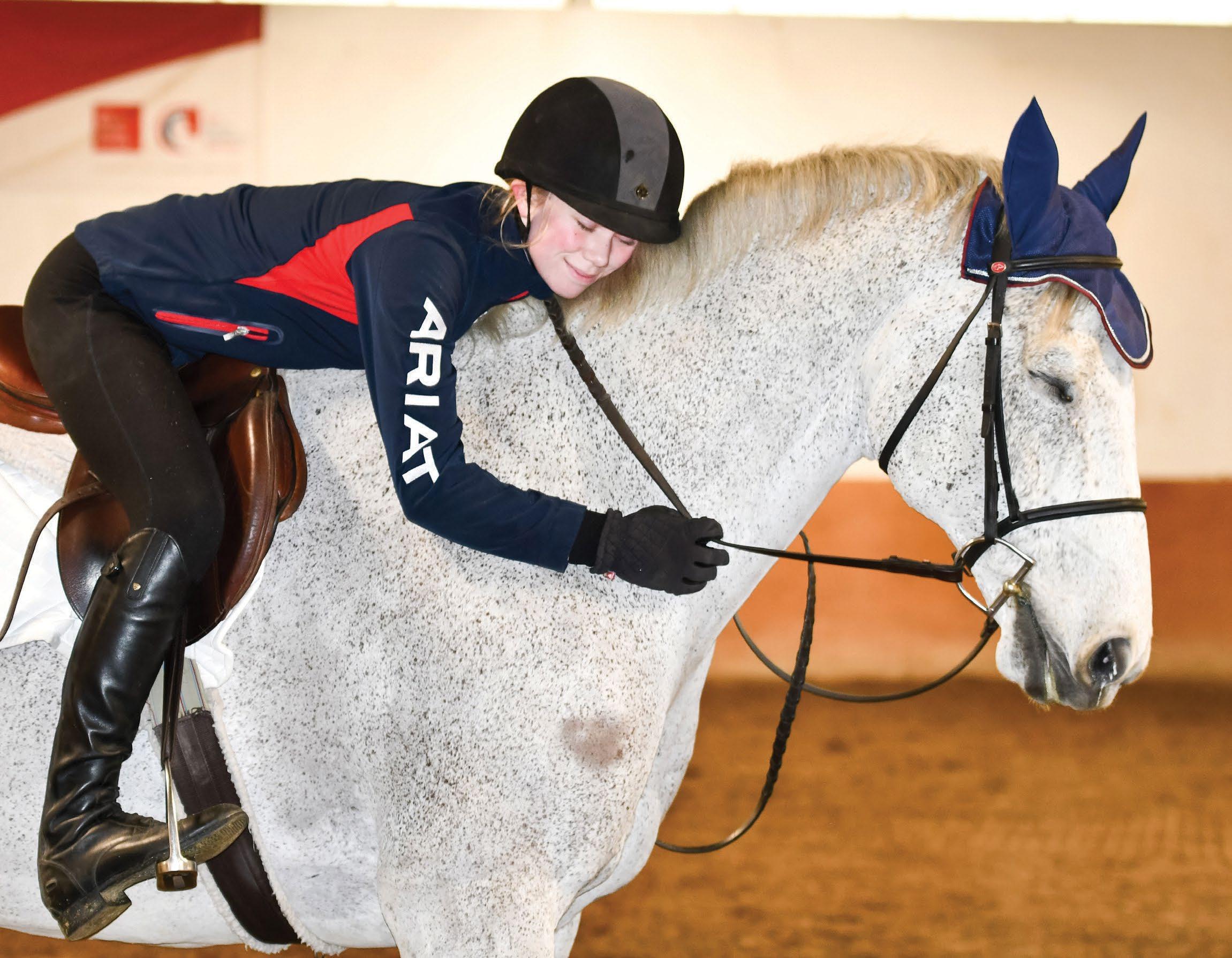
SCHEDULE AN IN-PERSON OR VIRTUAL VISIT AT SBSCHOOL.ORG/ VISIT
• SBS is the first and only secondary school equestrian facility in the United States to achieve prestigious certification as a British Horse Society-approved Livery Yard, Riding School, and Facility and offers the esteemed British Horse Society (BHS) Certification Program which is recognized in 35 countries worldwide.
• Offering 7-day boarding, 5-day boarding, and day enrollment options, we invite you to explore SBS!
Stoneleigh-Burnham School Equestrian Center 574 Bernardston Road | Greenfield, MA 01301 | (413) 773-8333 sbschool.org/equestrian
LETTERS FROM...


THE PRESIDENT
My sense of enthusiasm for USPC, its members, parents, leaders, volunteers, and staff was once again renewed in St. Louis, Mo., at the 2023 USPC Convention, Sponsored by Stephens College and Supported by Via Nova Training. Thank you to the Midwest Region for doing an excellent job hosting this convention.
In 2023, we are continuing to work toward simplifying administrative tasks at the local and regional levels and we received recommendations from the task force at the May Board of Governors meeting. Additionally, we are looking at how to include more of our membership at USPC Championships competitions and what new revenue streams we can identify, secure, and implement to support Championships, Convention, and the organization as a whole.
2023 will be a year of challenges for everyone, including USPC. Keeping our “why” at the forefront of all that we do will help us to turn those challenges into opportunities.
By inspiring and educating all generations to develop a sense of responsibility and respect for self, others, and our equine partners—I believe our opportunities are limitless!


Respectfully,
THE EXECUTIVE DIRECTOR
Since its founding in England in 1929, Pony Club organizations are now spread around the globe and serve as a solid foundation for equestrian education and competition worldwide. The United States Pony Clubs (USPC) is proud to be a member of the Pony Club International Alliance (PCIA). PCIA represents nearly 100,000 members from Australia, Canada, Hong Kong, Ireland, New Zealand, South Africa, the United Kingdom, and the United States. The primary role of the PCIA is to promote Pony Club membership; international cultural, educational, and competitive activities; and international exchanges between the countries.
International exchanges are just one of the many incredible experiences available to Pony Club members. One of our most recent international exchanges, the Inter-Pacific Exchange (IPE), was held January 8–26, 2023, in New Zealand. The USPC team joined Pony Club teams from Australia, Canada, Hong Kong, and New Zealand to train, compete, and experience the local culture. (You can read all about it on page 24.)
I’m so proud of the USPC team and how each member represented USPC, before, during, and after the competition. Congratulations to the USPC team for taking home the Nations Cup with the lowest cumulative score of the top three riders in each round of jumping. Team Australia finished second, followed by New Zealand in third, and Canada rounded out the fourth-place slot.
USPC team members included Keely Bechtol (National Member), Nora Goldfarb (Middle Tennessee Pony Club, Midsouth Region), Sierra Shurtz (Piedmont Pony Club, South Region), and Emily Thomas (Greenville Foothills Pony Club, Carolina Region), along with alternate Alexis DiPasqua (Radnor Hunt Pony Club, Eastern Pennsylvania Region), and Team Manager Alex Ambelang, an H-A alum from the Big Sky Region. The team was coached by Jennifer Merrick-Brooks, an A-level Pony Club alum who teaches and trains in Michigan. Thank you to our great USA ambassadors!
Teaching the best in horse care and riding, giving members the skills to compete on a world stage, and helping to shape futures, we are Pony Club!

Cheers,
Jennifer Sweet, USPC President
Teresa Woods, USPC Executive Director
4 DISCOVER USPC Spring/Summer 2023
YOU BELONG HERE
Whether you’re trotting into the show ring, moving to a new barn, or taking your first lesson, remember this—you belong. Regardless of your discipline, body shape, show record, or breech size, Kerrits is commited to helping you feel as good on the outside as horses make you feel on the inside.
Shop your local Kerrits retailer or online at kerrits.com.
 Malea & Dolly
Malea & Dolly
KRISTIN LEE PHOTOGRAPHY
Malea is wearing the Always Cool Ice Fil® Short Sleeve Shirt and Crossover II® Breech
CONGRATULATIONS
Congratulations to the following recipients of the USPC Volunteer Recognition Award:
■ Deborah Gulick, St. Augustine Pony Club
■ Kathy Tobin-Greer, St. Augustine Pony Club
■ Crystal Wylie, Sandia Creek Ranch Pony Club
Riding Center
Not to Miss
Congratulations to the following recipients of the USPC Local Legends Award:
Susan Colliver, Walnut Creek Pony Club and Midsouth Region
Allison Deaton, Long Run Pony Club, Covered Bridge
Pony Club, and Midsouth Region

Betty Galambos, Briarwood Pony Club and Northwest Region
Robert Holt, Midsouth Region
Becky Logsdon, Flying Changes Pony Club and Midsouth Region
Jan Whitehouse, Keeneland Pony Club and Midsouth Region
■ New Pony Club Podcast episodes are available on podcast players: Catch interviews with Joan Leuck-Waak, Genevieve Munson, Lisa Reader, Genevieve and Lexi Rohner, Aliina Keers, and Keira O’Connor-Reichert—ponyclubpodcast.buzzsprout.com
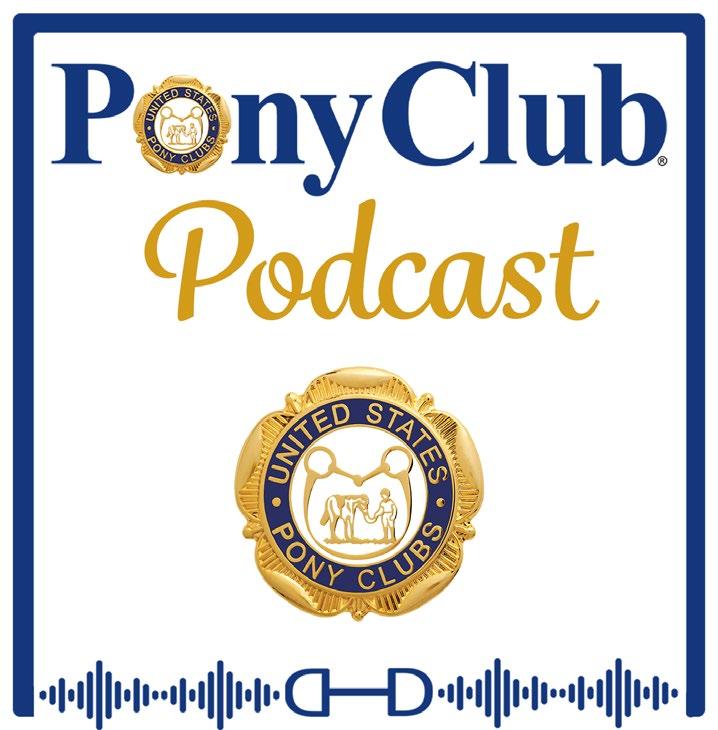

■ Catch the following articles on the Pony Club Blog:
� “Volunteer Opportunities in Pony Club” bit.ly/volunteer-opportunities-in-pony-club

� “Horse Management Rule Changes for 2023” bit.ly/horse-management-rule-changes-for-2023
� “Improve Your Riding by Exploring Other Disciplines” bit.ly/explore-other-horse-disciplines
� “Viewpoint from a Pony Club Visiting Instructor” bit.ly/viewpoint-from-a-pony-club-visiting-instructor
ponyclubpodcast.buzzsprout.com
6 DISCOVER USPC Spring/Summer 2023
BITS & PIECES
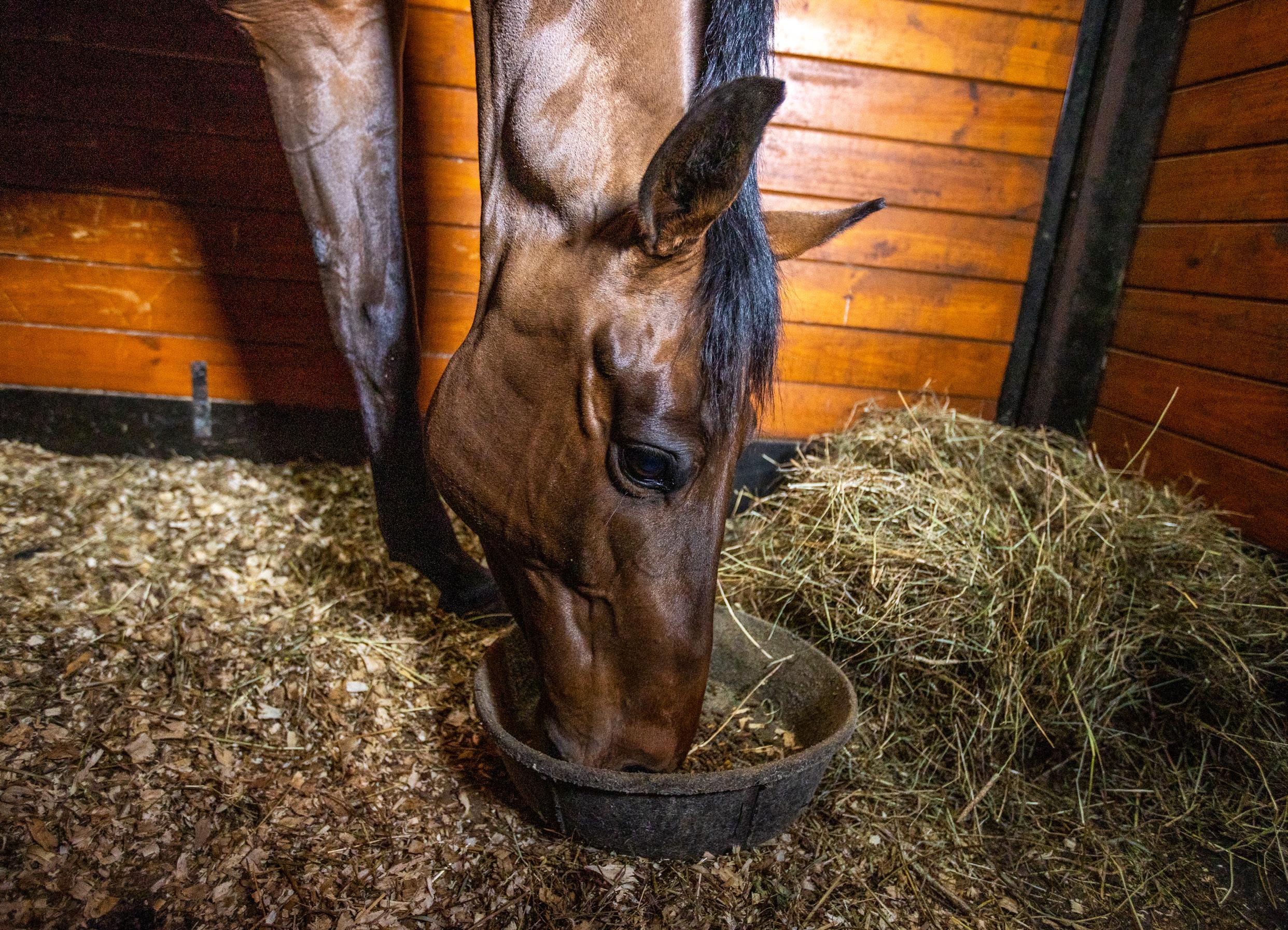



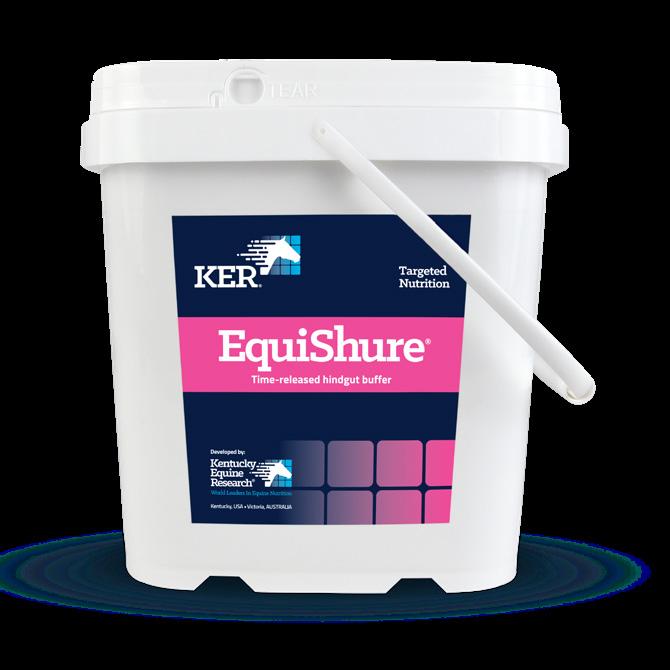


Developed by Kentucky Equine Research® World Leaders in Equine Nutrition™ 859.873.1988 • info@ker.com Find science-based solutions at shop.ker.com. Horse owners understand the fragility of a horse’s gastrointestinal tract, especially when it comes to two chronic conditions: gastric ulcers and hindgut acidosis. From EquiShure®, a research-proven hindgut buffer, to ReSolvin EQ™, a revolutionary new way to manage gastric ulcers, KER Targeted Nutrition Digestive Health products are designed to support your horse’s entire digestive tract. Targeted Nutrition for Total Digestive Tract Health
USPC C Manual Crossword Puzzle

Across

2. Is an absorbent, comfortable bedding and is not edible. It can be bought in bags or by the truckload.
6. Fences set up one or two strides apart. These require accuracy, balance, and rhythm.
8. Clinical signs of this infection caused by a virus include depression, loss of appetite, fever, runny nose with white mucus, and coughing.
9. Framework of a saddle. There are four of these widths: narrow, medium, medium-wide, and wide.
All answers come from The United States Pony Clubs Manual of Horsemanship C1-C2 Level.

Find the answer key on pg. 29.
Down
1. The beats or patterns of a gait.
3. This type of facility is owned by people who keep and ride their horses at home on their own land.
4. Short stick with a loop or flat popper on the end. It is carried down.
5. This type of fencing wire is inexpensive; sometimes used for larger pastures, but it can cause serious injury, especially if a horse gets caught up in loose wire. Avoid using, if possible.
6. Dried forage cut into small pieces; smaller than chopped hay.
7. This type of clip is used on show horses and includes the body, head, and legs.
JUST FOR FUN
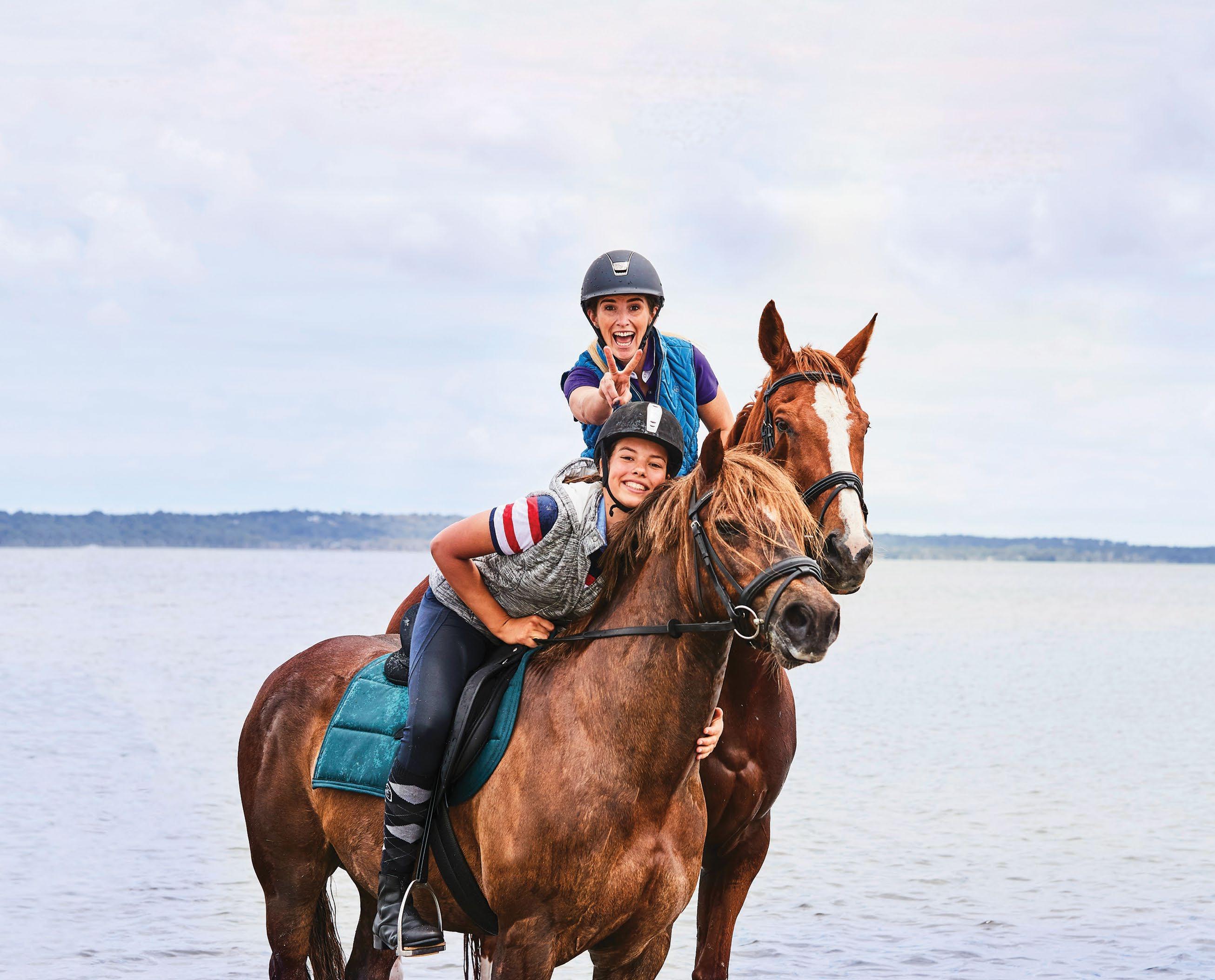

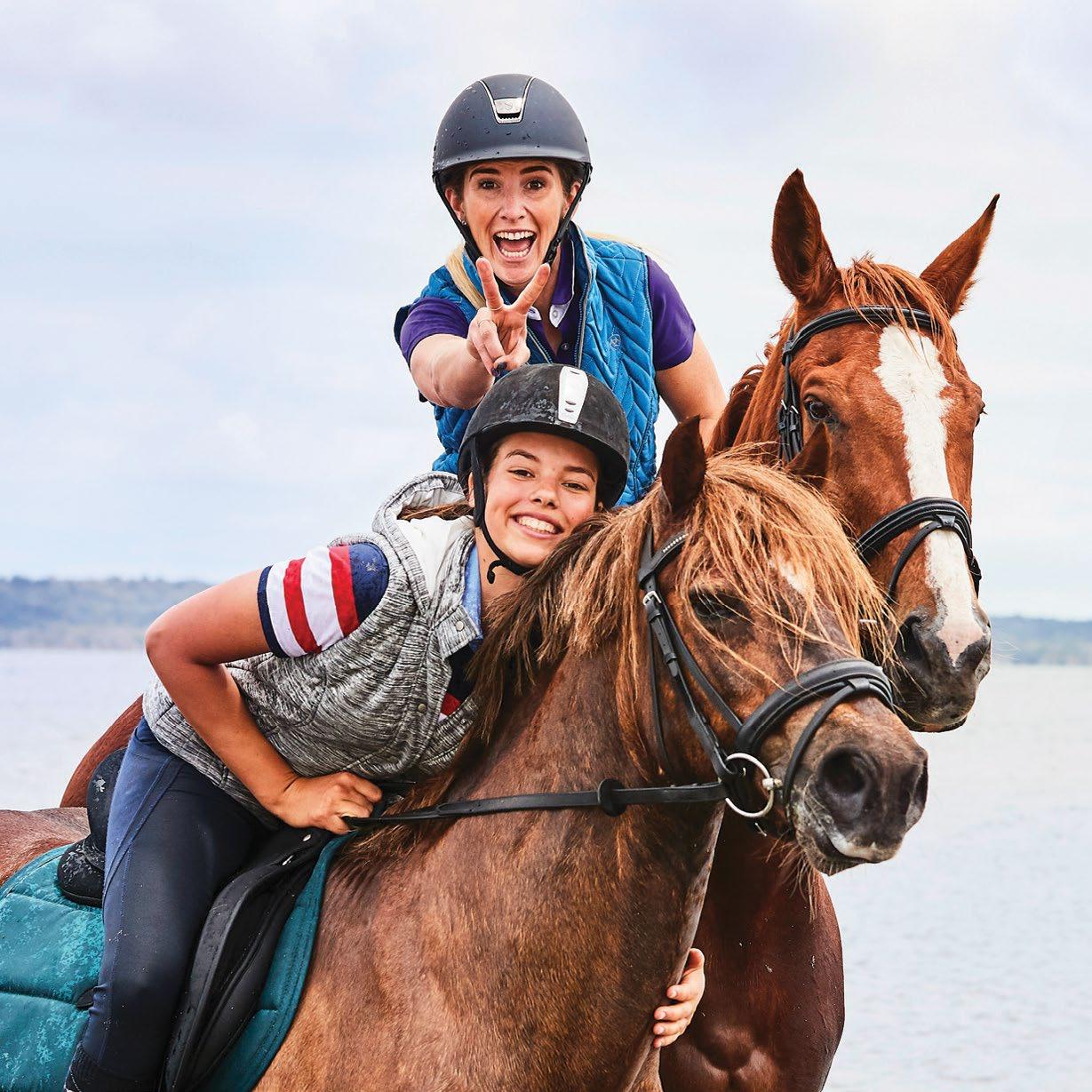
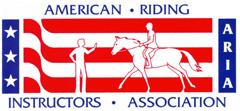


9 DISCOVER USPC ponyclub.org FRIENDS Wintec friends have more fun! Our Wintec 2000 All Purpose saddles are like no other, we can ride anywhere and in any weather! The super-soft and grippy seat and knee inserts are comfortable and secure, and our horses feel so free to move! Wintec 2000 All Purpose Official Saddle Supplier of the American Riding Instructors Association Official Saddle Sponsor of the United States Pony Clubs @wintecsaddles Share your story Find your next Wintec saddle at wintec-saddles.com @wintec.saddles
Discover Something New
By Sue Beth Bunn, USPC Activities Discipline Promotion Committee
Are you a Pony Club leader looking for new ideas for meetings? Has your club/center or your own riding fallen into a rut? Are you are looking for a rainy-day activity for your lesson program, a way to make your days at the barn more dynamic, or a new discipline for you and your horse? The United States Pony Clubs (USPC) offers mounted and unmounted opportunities and education in 15 different equestrian disciplines.
Unmounted Activities
Pony Club is an excellent resource for finding unmounted subjects and lesson plans when riding is not possible or to switch things up. The basics of any discipline can be taught as an unmounted lesson without needing horses.
For example, the introduction to Polocrosse usually begins with learning how to handle the racquet. Mounted Games can easily be taught with simple props as members learn individual games and the teamwork of a relay team. Driving education can begin as an unmounted lesson by working with a horse, bridle, longing surcingle, and driving reins (or two longe lines).
Quiz provides the perfect format for teaching any topic in a broad manner. Each phase of Quiz is created to present material in various ways for a complete approach to teaching. By using different Quiz phases to teach a subject, you can go beyond what is tested on the Standard of Proficiencies (SOPs) and teach the information of the SOPs in a more comprehensive manner. Quiz asks the member to discuss, identify, demonstrate, and problem solve on each subject.
Teaching bits can become more detailed than just identifying the different options, like in Mega Room. The Station phase creates scenarios requiring the choice of bit to fit the description of the bit’s action, while the Barn phase may give a scenario describing a horse’s behavior and actions and request the member to pick the best bit to address that scenario. This approach to teaching unmounted subjects creates a more developed understanding of the topic.
If you are looking for new topics to teach, the SOPs and the Horse Management Handbook and Competition Rules can provide countless unmounted lesson ideas.
More Dynamic Meetings
USPC is unique in our ability to provide our members the opportunity to try something new without investing too deeply
financially. Many members have discovered a new discipline that they would never have had access to had it not been for a Pony Club meeting.

Exposing members to a new discipline can be as easy as inviting an instructor or group to provide a clinic at a club/ center meeting or taking a field trip for a meeting. Many local equine groups are excited to introduce their sport to more people, and they can provide the necessary equipment. Always look for ways for members to participate in a new discipline at an introductory level.
Try inviting a Trail group to your meeting, especially if they will provide obstacles and teach members how to maneuver obstacles. Many Vaulting schools and Driving instructors will offer demonstrations, host a group, or travel to you with equipment and experienced horses. Tetrathlon can also be introduced away from the barn. Between swimming, running, and shooting, Tetrathlon makes for a fun summer meeting at a pool or in the winter at an indoor shooting range.
Members could also enter a competitive trail ride or a distance ride to learn more about conditioning. Also, many local equine riding groups often offer charity trail rides or obstacle courses that are open to the public. Find a Gymkhana or play day in your area and select some races for you and your horse to try. And finally, most foxhunts welcome juniors (and adults). Participating in an event as a group can be less intimidating and more fun for all, so find a hunt, participate in point-to-points, and/or work to qualify for the annual Junior North American Field Hunter Championships.
To pursue an interest and find opportunities in any specific discipline, simply visit the related national organization’s website, follow the USPC discipline-related Facebook pages, and check out the discipline page on the USPC website at www.ponyclub.org/Disciplines.aspx

10 DISCOVER USPC Spring/Summer 2023
Dave Traxler

zoetisequine.com All trademarks are the property of Zoetis Services LLC or a related company or a licensor unless otherwise noted. © 2022 Zoetis Services LLC. All rights reserved. GEQ-00844 Because they do so much for us, we only do what’s right for them. We’re always by your side in providing your horse with the right care. Long Live the Horse.
MEMBER SPOTLIGHT
Bella Field
AGE: 13 | CLUB/REGION: SILVER SNAFFLES PONY CLUB, GREAT LAKES REGION | YEARS IN PONY CLUB: 4.5

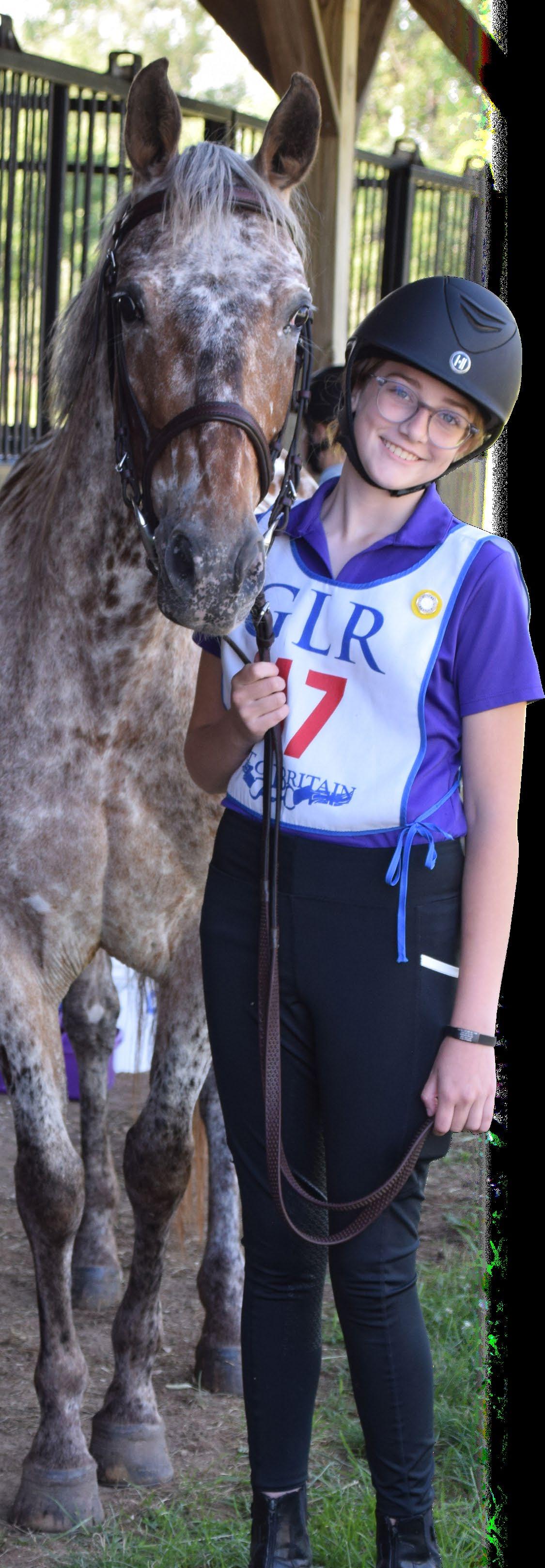
Current certification (and/or certification currently working on): D-3 Eventing, working on C-1 Eventing
What disciplines and/or activities are you involved in?
Eventing, Dressage, Show Jumping, Horse Management, and Quiz. I also tried Tetrathlon at a camp that my region held last summer and loved it!
Tell us about your current mount(s) and what you do with them: Cleo is a very sweet 14.2-hand 10-year-old Appaloosa-cross. She is green but is learning quickly and aims to please. Right now, we are working on getting a balanced, adjustable canter; straightness, and improving our bending. Cleo has come a long way from when I first started riding her a year-and-a-half ago. We’ve gone to clinics, rallies, cross-country schooling, shows, Tetrathlon camp, and even riding on the beach in Michigan. I like to try new things with her when I have the opportunity and give her as many different experiences as I can.
Tell us about your goals (with Pony Club, with riding, and life): My goal right now is to get Cleo to a C-1 level and to get my C-1 Eventing certification on her. I also hope to go to USPC Championships with her in 2024 for Show Jumping.
What is your favorite thing about Pony Club?

There are many things I love about Pony Club. The rallies and other opportunities it provides are unique experiences you can’t find anywhere else. I’ve also made some of my best friends in Pony Club and have created lifelong memories with them. I enjoy traveling out of state to different equestrian facilities to do Pony Club activities. I’ve done so much more with my horse than I would have ever done without Pony Club.
What is one thing you would tell younger members first joining Pony Club?
Don’t rush your certifications. Take your time and make sure you are ready for your tests. Enjoy your time in Pony Club, and don’t stress about progressing quickly. I’d also tell them to be as active as they can and to take advantage of all the opportunities Pony Club offers.
What is your favorite way to prep for a Horse Management certification?
I like to use the Pony Club manual and test sheets to have my mom quiz me. My friends and I have also had study sleepovers together in the past. Getting help from more knowledgeable people for things like wrapping legs is also a good idea.
Photos Courtesy Casey Field
If you could try any other discipline or activity, what would it be and why?
I would try Mounted Games, because it looks fun and would be a new riding challenge. I was able to watch the Mounted Games competitors at USPC Championships last summer, and they were amazing! I recently have had the chance to practice some Polocrosse skills at my barn and would like to continue to learn more about that discipline.


Favorite Pony Club memory: My first mounted regional rally was in June 2019 at Albion College in Albion, Mich. I learned so much about how rallies work, time management, and how important it is to work as a team. I shared a pony with my teammate, Katie, and that’s how our friendship began. She’s still one of my best friends today.
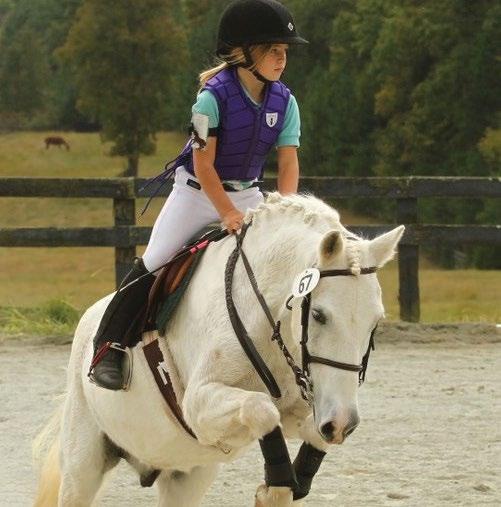

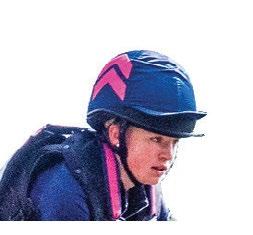
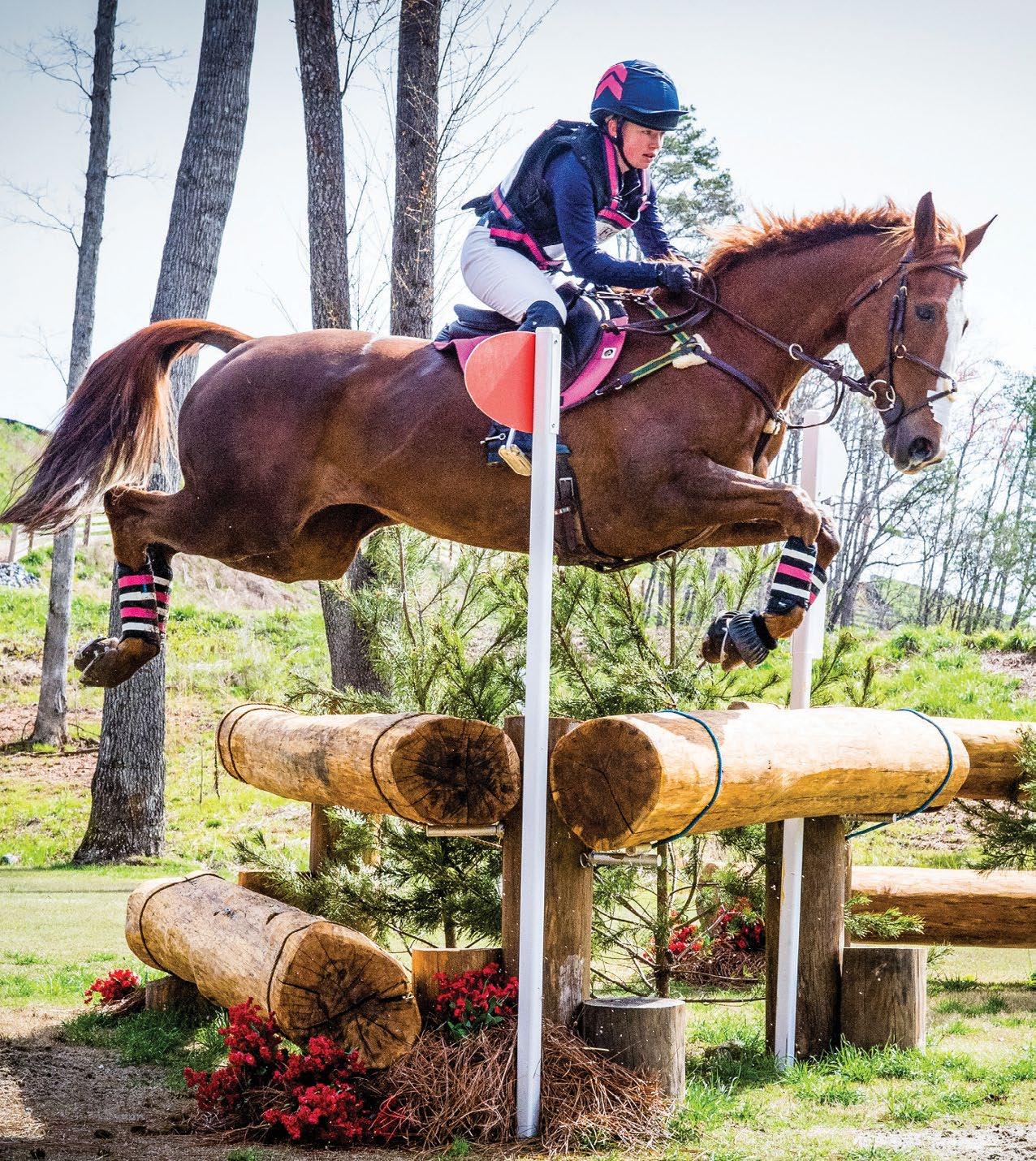

What makes you #PonyClubProud?
I am proud that I can not only ride a horse, but I can also properly care for them thanks to the horse management skills

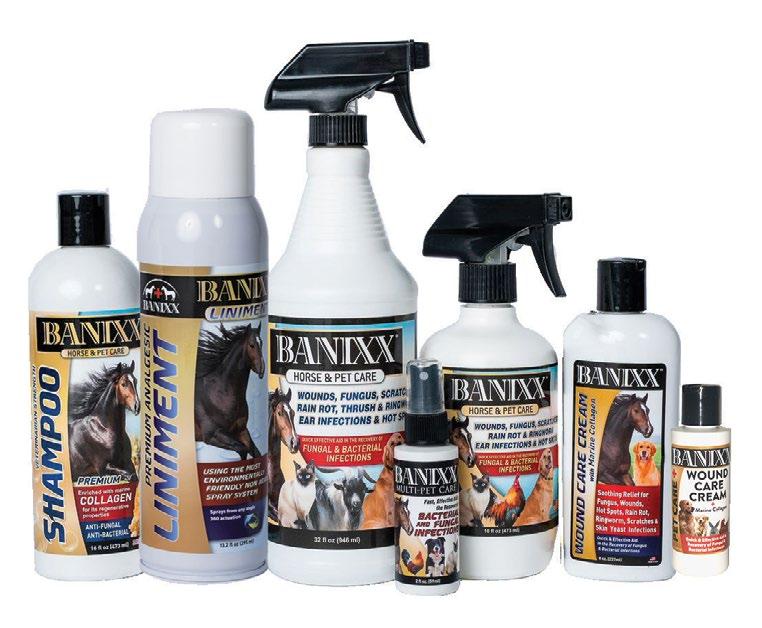
I’ve learned while being in Pony Club.
Is there anything else you would like to tell us?
Last summer, I went to USPC Championships East at Tryon International Equestrian Center. It was my first time at Championships, and I had a great time. It was so cool to see an equestrian center of that size. My team and I went for Quiz. I recommend competing in Quiz for your first Championships experience since it is less stressful than taking a mount. My team consisted of me, two of my best friends from my club, and a scramble from our region. It was fun to get to know a new person from our region that I probably wouldn’t have ever met without USPC Championships. We ended up placing second with only two points separating us from first. If you go to USPC Championships, be sure to bring lots of regional pins, because trading and collecting pins from other regions is so fun! My favorite memories were walking in the opening ceremonies, and also the competitor party and upper-level showcase on the last night.
13 DISCOVER USPC ponyclub.org
“Banixx is
Healthcare Solution”
Bella’s current horse is Cleo, a 14.2-hand 10-year-old Appaloosa-cross, who is learning new things with Bella.
My Go-To
#1 Vet Recommended
Dylan Philipps (H-A)
HighTime Photography
877-944-0795 Banixx.com
Dylan Philipps, then and now
Spanning the Ages
By Sarah Evers Conrad, USPC Marketing and Communications Director
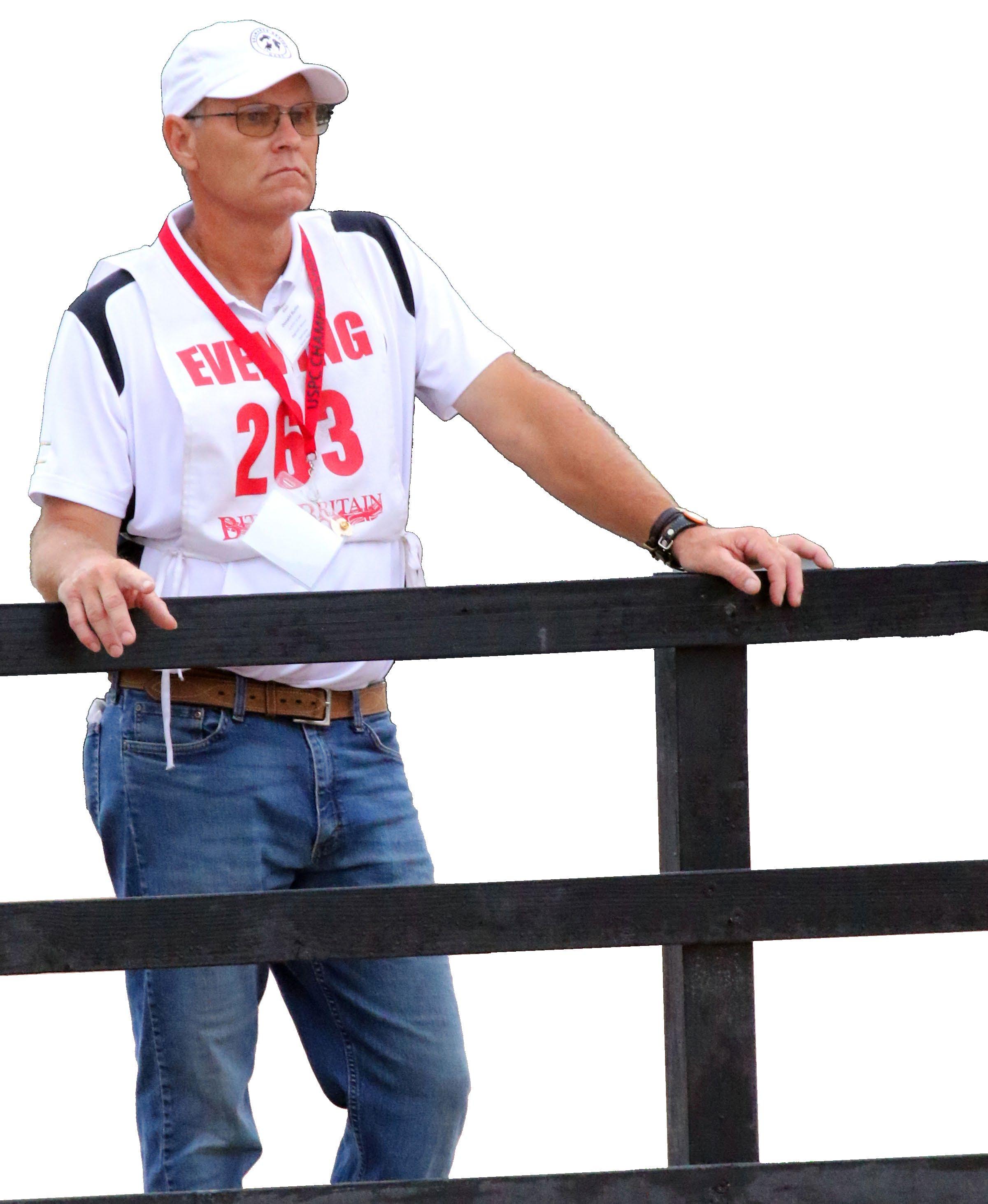
There’s a big “Did you know…” question about Pony Club that many people are surprised to learn the answer to … while others are already in on the secret. And that is, “Did you know that Pony Club membership is open to all ages?” Perhaps it’s the best-kept secret within the realm of Pony Club, but it definitely shouldn’t be! In fact, the United States Pony Clubs (USPC or Pony Club) already has 1,831 out of 7,629 participating members who are above the age of 18 (as of the end of 2022).
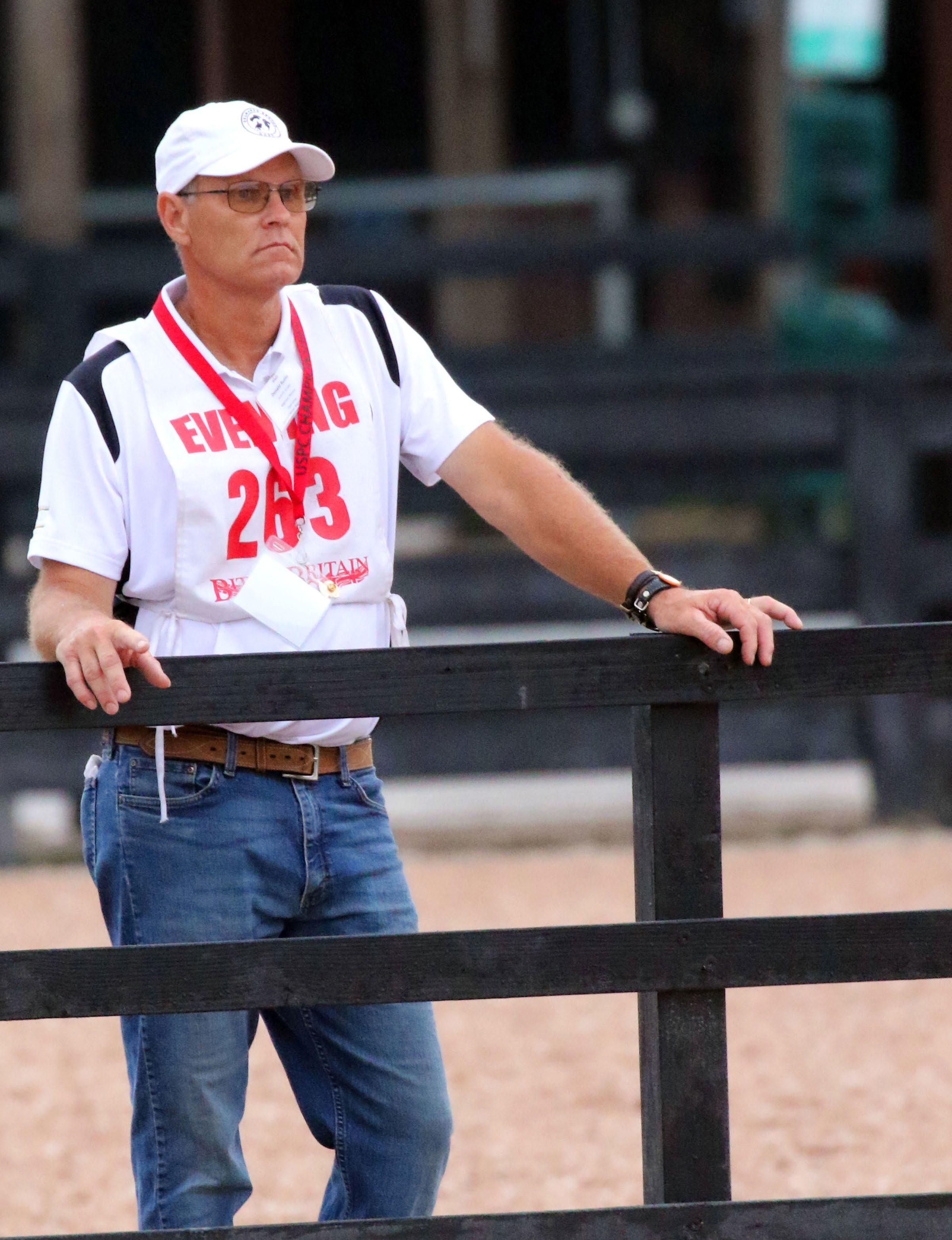
Pony Club membership now provides equine education for everyone, and members of all ages are enjoying everything USPC has to offer.
GRC Photo LLC
Donald Ruths, 60, a participating member, watches his son ride at USPC Championships East.
That means that the USPC membership has grown to 24% adults, who not only know that membership is open to any age, but who wanted to experience it for themselves. Over time the word is getting out, and equestrians of all ages are starting to take advantage of many of the opportunities that Pony Club has to offer.
A Bit of History Behind the Change
USPC is an ever-evolving organization, changing to meet the needs of its membership and the equestrian community as a whole. But one of the biggest changes came not even 10 years ago in 2015 when membership into Pony Club was officially opened to any age member being recognized as a full participating member.
That’s not to say that there weren’t already adults able to participate in Pony Club before 2015. Historically, USPC has been mainly a youth organization, with age of membership being expanded to anyone up to age 21 at the turn of the last century. In 2001, a pilot program for adult education, called the USPC Horsemasters Program for Adult Volunteers, was approved and comprised of adult programs in various regions with a total of 89 members. The USPC Board of Governors gradually expanded the program to 274 members by 2007, which is when the program showcased enough support and participation for the Board to fully adopt the Horsemasters Program.
In 2008, the Board also approved an age extension to the age of 25. And while members of any age were allowed after 2015, it was in 2018 that the term “Horsemasters” was dropped, and an adult member would now be known as a “participating member,” just like youth members. It was agreed upon across leadership that “a member is a member,” and the 2019 version of the Standards of Proficiency no longer offered any allowances based on age.
Members Return to Pony Club
Former Pony Club members of all ages are returning to membership for a variety of reasons—some to now participate with family, like Rachel Bolander, 43, who participates with her mother, Eileen Graves, 72, an H-B HM and C-2 in Eventing. Both are in the adults-only Gold Country Pony Club in the Sierra Pacific Region.
Bolander has been riding since age 7 and was first involved in distance riding before she discovered Pony Club and Eventing in her mid-teens, eventually becoming a C-2 in Eventing with Sierra Gold Pony Club. At that time, the USPC graduate age meant she had to wrap up her Pony Club years, so she “did life” and got out of horses for a while.
She rejoined Pony Club in 2016 at the insistence of her mom,
who joined USPC for the first time as part of Horsemasters in 2014. “She’s the one who actually brought me back into it,” said Bolander, who is a busy mom of two kids, yet she manages to make time for Pony Club. “It’s really nice that they let people join now after the age of 21, because I can put more time into it now, and it’s just a really great way to meet different people in your area.”
She was attracted to Pony Club by the socialness of it, as she and her mother have friends who are also involved. She’s also enjoying the unmounted meetings and local Pony Club camps in her area, which encompass all ages. She would like to earn her C-1 and C-2 certifications in Dressage. Bolander also makes time to volunteer as Treasurer for her club.
“I would definitely recommend Pony Club to riders of any age, especially to young riders, because I really think that Pony Club is so focused on safety and the health of the horse, that it’s such a good thing to go through when you’re young,” said Bolander, adding that it’s also perfect for older adults who are just getting into horses because of all there is to learn at such a reasonable cost.
“Take advantage of all the things Pony Club offers,” she advised. “I know that there is a lot of stuff online [on www. ponyclub.org]. Also, reach out to other Pony Club members to ask for help with your certifications and knowledge-based things.”
Encompassing the Whole Family
Some families have made participation in Pony Club a whole family affair. Donald Ruths, 60, an H-A member in Eventing and a member of St. Margaret’s Pony Club in the Delmarva Region, rejoined Pony Club in 2015 because his two daughters, Stephanie and Sabrina, and later his son Donald, were all USPC members. When he was younger, he was a member of St. Margaret’s Pony Club, as was his wife, Annette. In fact, it was in Pony Club that Donald and Annette first met, kicking off the beginning of their life together.

Donald said he wanted to rejoin USPC due to his children and his experience as an eventer. He has been to USPC Championships every year since 2015. “I wouldn’t travel that far on a regular basis unless it was for Pony Club,” he said.
He has considered going for his A certification, but the main thing he enjoys most is the camaraderie with his son and other senior riders.
He said there is no doubt he would recommend Pony Club to riders of any age just for the experience and to learn all of the knowledge associated with the program. “It’s just a great learning experience,” he added.
15 DISCOVER USPC ponyclub.org
Courtesy Rachel Bolander/Micaela Love
As a busy mom, Rachel Bolander, 43, loves the social outlet that Pony Club can provide.
First-Timers
On the flip side, some adult members opt to join Pony Club for the first time since the program opened up to all ages. It’s not long before they become fans.
One such fan who found Pony Club later in life is Cameron Sadler, 56, an avid foxhunter who hunts part of the year, and serves as Master of Moore County Hounds, and who events with the Sandhills Pony Club in the Carolina Region the rest of the year. This D-3 in Eventing and D-2 in Hunter Seat Equitation has also competed at the Retired Racehorse Project’s Thoroughbred Makeover and National Symposium, presented by the Thoroughbred Charities of America. In addition, she won the USPC Award at the 2022 event for being the Pony Club rider with the most points.
Sadler shared she really enjoys summer Pony Club meetings, clinics, and a joint camp between her local hunt and Sandhills Pony Club. Part of her motivation for joining Pony Club was to see if there were any other people who wanted to hunt, but she also wanted to learn more about caring for her own horses through Horse Management. She called the Horse Management aspect and the manuals excellent, and she really enjoys certain topics she can apply to her 10 off-track Thoroughbreds, some of whom she has rehabbed from injuries and/or taught a second career.
“I like to keep learning and getting better and better at treating different things
that are going on with my horses, because there is always something going on with that many,” said Sadler. “And it’s been fun for me to learn about different disciplines. I never evented while growing up.”
Sadler would recommend Pony Club to any age and has actually helped some of the local hunt members to join. “I think most adults enjoy still learning something new and getting together with people who have like interests,” she said. “I don’t really see a downside to it. It’s not expensive. The lessons and clinics that are set up here for us are amazing.”
Equine Professionals in USPC
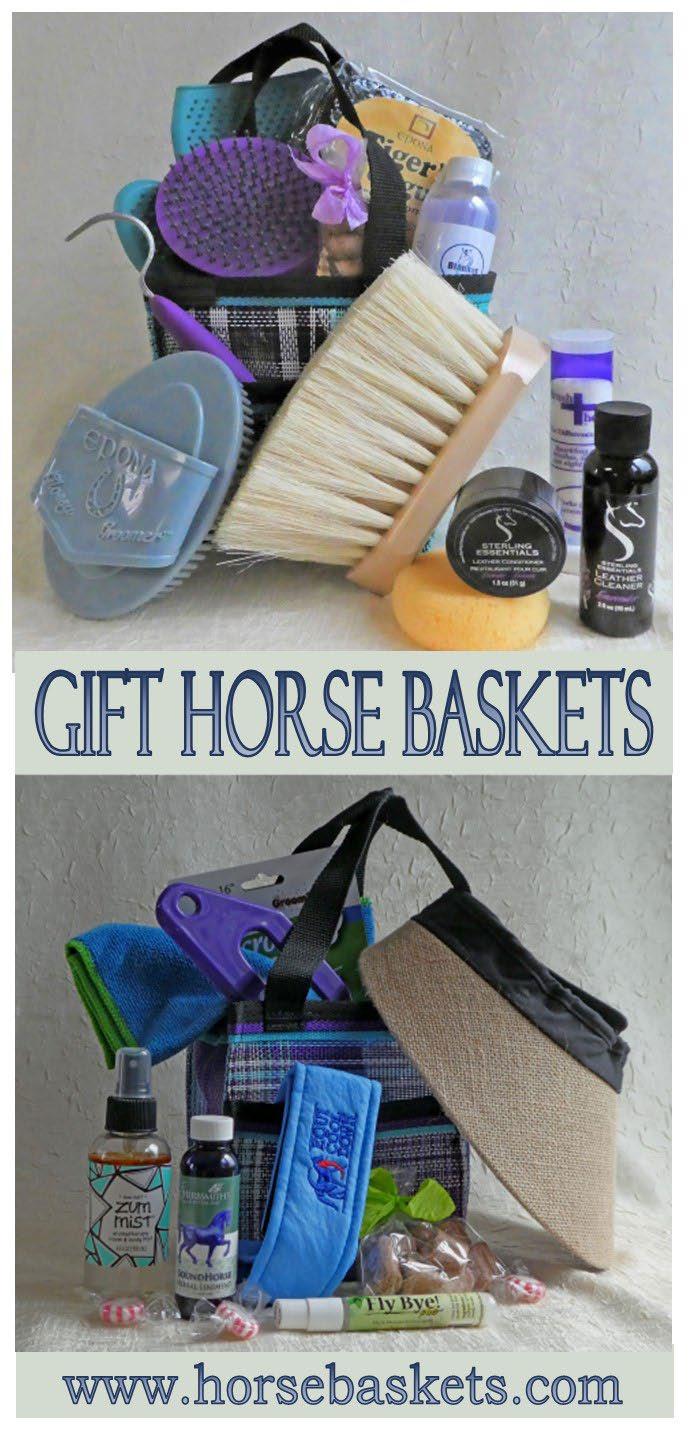
Another first-timer is Joan Leuck-Waak, 63, who has been a member of Dune Riders Pony Club in the Lake Shore Region since 2018 and now has her H-B HM, B in Dressage, and a C-2 in Flat Eventing. She hopes to test her H-A this year.
As co-owner of Angels Flight Farm, LLC, in Manitowoc, Wisc., this dressage riding instructor and horse trainer is enjoying everything Pony Club has to offer. Her riding experiences span across disciplines, and professionally she has served as an officer on the Los Angeles Police Department’s mounted unit. Over her lifetime with horses, she has earned her United States Dressage Federation Bronze and Silver medals and is currently working toward her Gold medal. She also hopes to continue with the Pony Club certifications and get her A in Dressage.
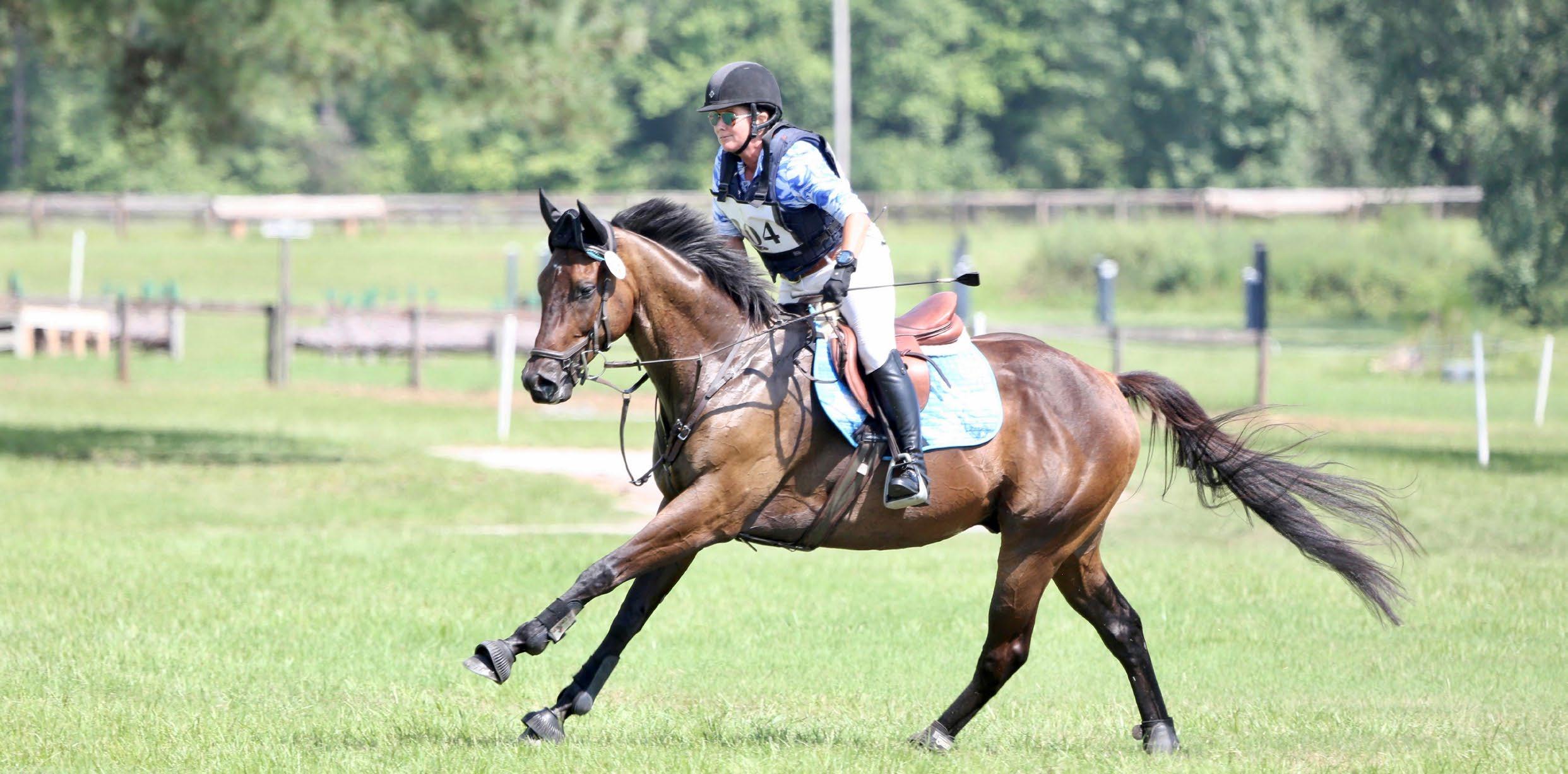
16 DISCOVER USPC Spring/Summer 2023
Cameron Sadler, 56, has enjoyed learning Eventing and trying new things in Pony Club.
High Time Photography
Before joining, Leuck-Waak had Pony Club members who were her riding students, and all of their praise of the events and programs drew her in. “I checked it out and never looked back,” she said. “It was and still is very fulfilling. Pony Club makes you a complete horse person.”
She offered praise for the way Pony Club has members set goals and then how the program helps them get to those goals. She added that the skills taught can not only be used with horses, but also in life.
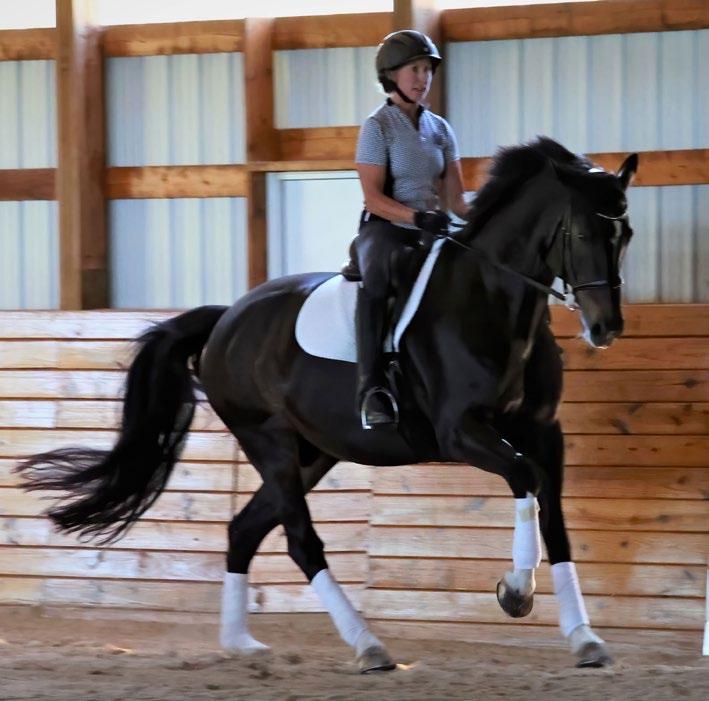
In addition to her duties with her own facility, Leuck-Waak also gives her time when she can as a Horse Management Organizer (along with Kristi Jenkins) in her region. “I wish I could give back more,” she added. “I’ve learned so much this way, too. Because I’ve already gotten so much back from Pony Club, it was a way to say thank you back and to help where I can. I am always learning from the other officers, because they’ve been around a long time.”
With her love of learning anything horse-related, Leuck-Waak said she loves using the Pony Club website’s resources. “Personally, I look at it to help me and my business to become a better horse
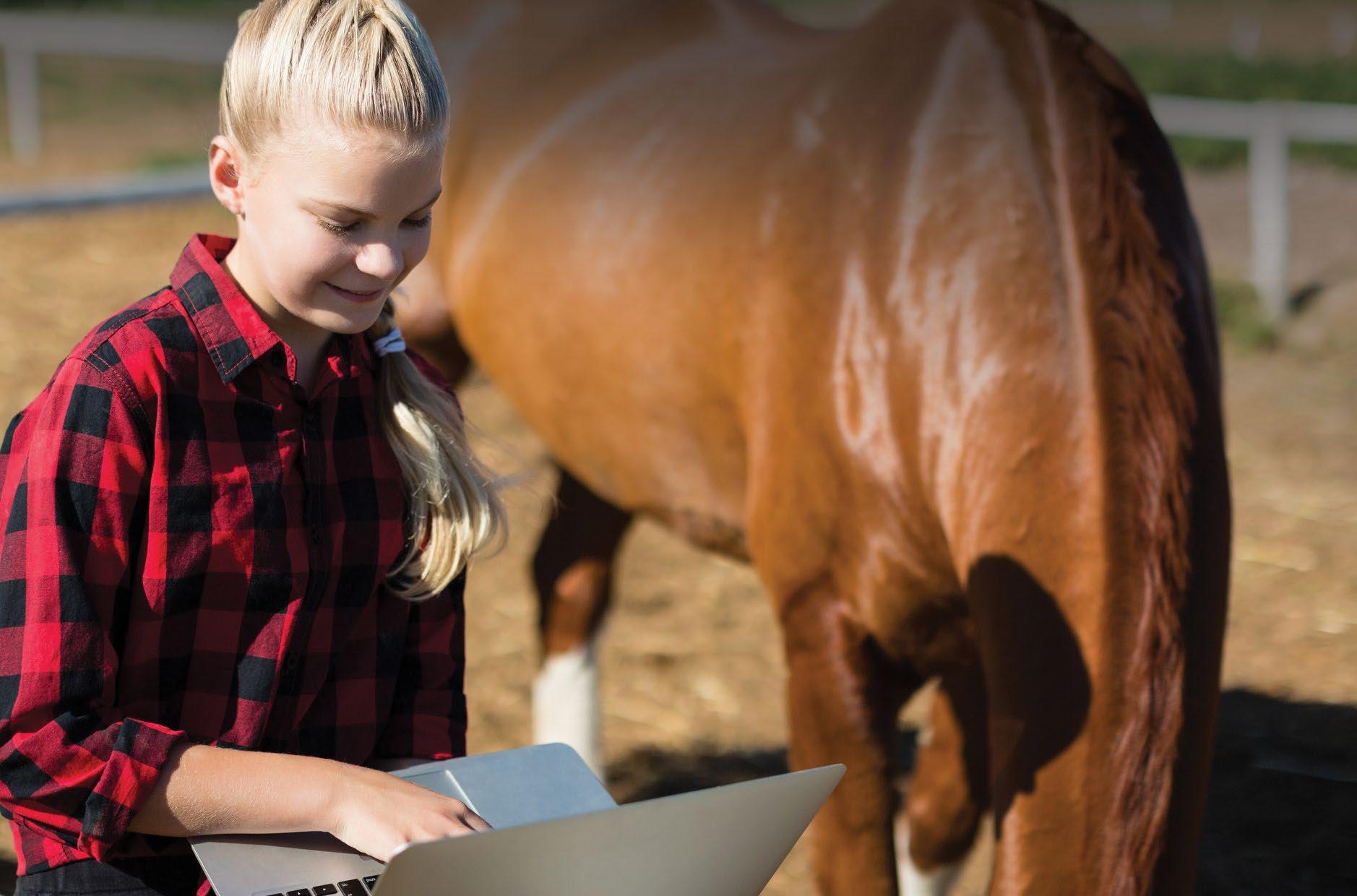
person so I can help other people more.”

The day she knew Pony Club was for her stands out vividly in her mind. She had volunteered at a local event with 20 to 30 other adult women volunteers just like her. “I said to myself, ‘These are all little horsecrazy girls doing the horse-crazy stuff in their more mature years, and that we were all still horse crazy,” she described, adding the memory always brings a tear to her eye.
Leuck-Waak shared more of her experiences on the Pony Club Podcast, episode #16, found at www.bit.ly/ponyclub-podcast16
Moving Forward
With so many adult members finding the benefits in Pony Club, the change in membership dynamics was a change worth making for many reasons. It not only benefits the organization as a whole— through donations from adults vested in the program—but it also benefits the younger members as adult members serve as role models and pass along their knowledge to up-and-coming younger participants or offer up horses to younger riders who need a mount for a lesson or an event. These adults may also take on leadership or volunteer roles in addition to being program participants.
This one change can help USPC’s development and sustainability into the future. And with that, the hope is that the growth in membership for all ages continues. So spread the word as this is one thing that shouldn’t be Pony Club’s best-kept secret anymore.

17 DISCOVER USPC ponyclub.org Collect Them All! Scan the QR code to collect KPP running horse stickers. USPC Spring 2023
Courtesy Holly Kemmis
Joan Leuck-Waak, 63, has found Pony Club helpful with her horse business and in life.
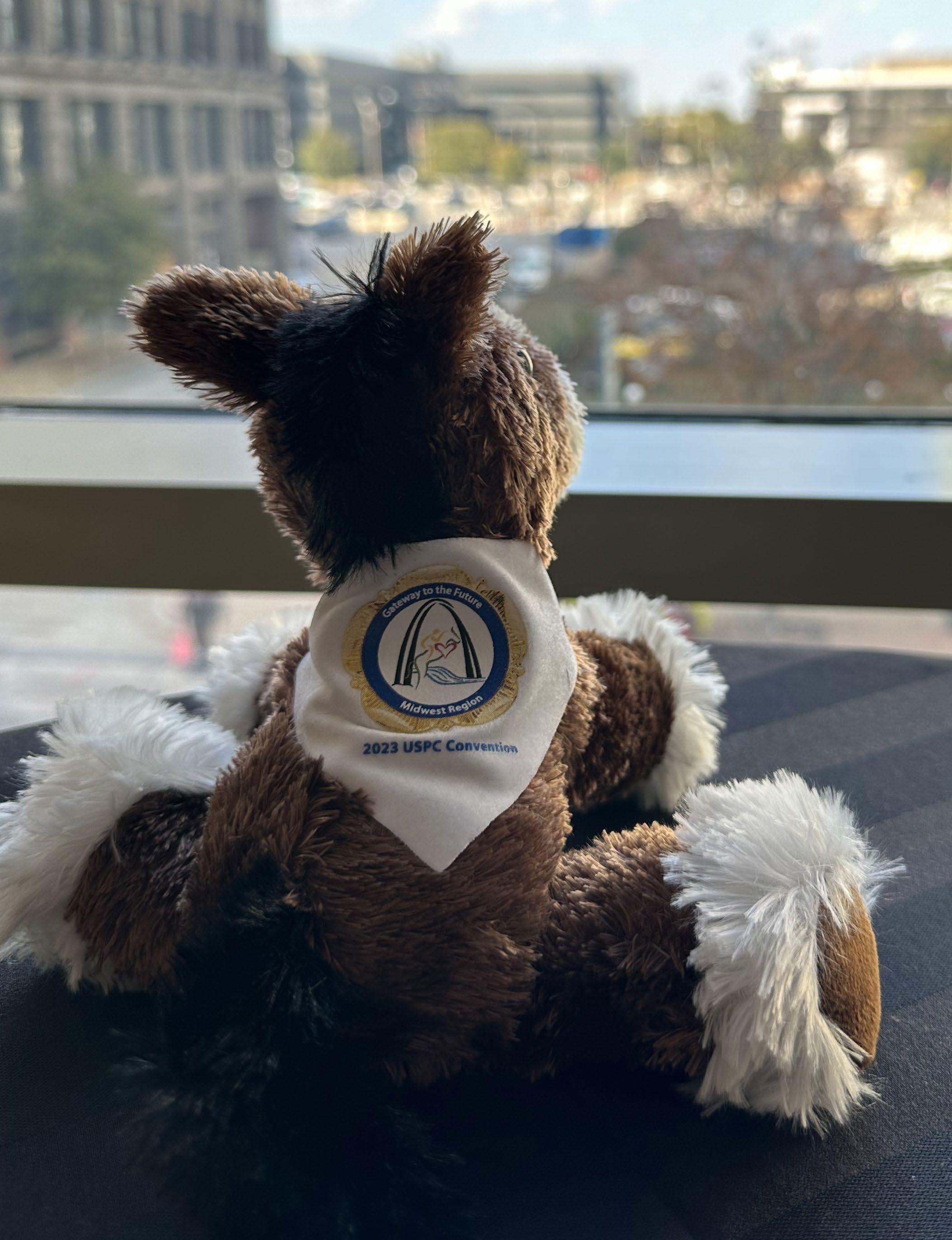 Erin Roland/United States Pony Clubs
Erin Roland/United States Pony Clubs
St. Louis Celebration: 2023 USPC Convention Recap
By Liz Moyer, USPC Fundraising and Marketing Coordinator

St. Louis, Mo., was the setting for the 2023 USPC Convention, Sponsored by Stephens College and Supported by Via Nova Training. Hosted by the Midwest Region, the iconic St. Louis arch was the inspiration for the Gateway to the Future event theme.

Pony Club members, leaders, and volunteers, as well as equine enthusiasts, gathered from January 18–22 at the Marriott St. Louis Grand, with additional attendees logging in online through the virtual event platform. Nearly 450 attendees enjoyed more than 40 educational workshops and seminars, plus meetings and awards presentations, and special Pony Club activities. The event offered a blend of in-person, livestream, and ondemand content, bringing additional value and flexibility to the Convention experience. Convention attendees, and those who purchased a virtual convention pass, will have access to view recorded content and on-demand workshops via the virtual event platform through August 1, 2023.
“Convention brings the opportunity to connect with each other, learn from the best, and get inspired for the year ahead, as we celebrate Pony Club’s accomplishments and plan for the future,” said USPC Executive Director Teresa Woods, reflecting on the success of the event.
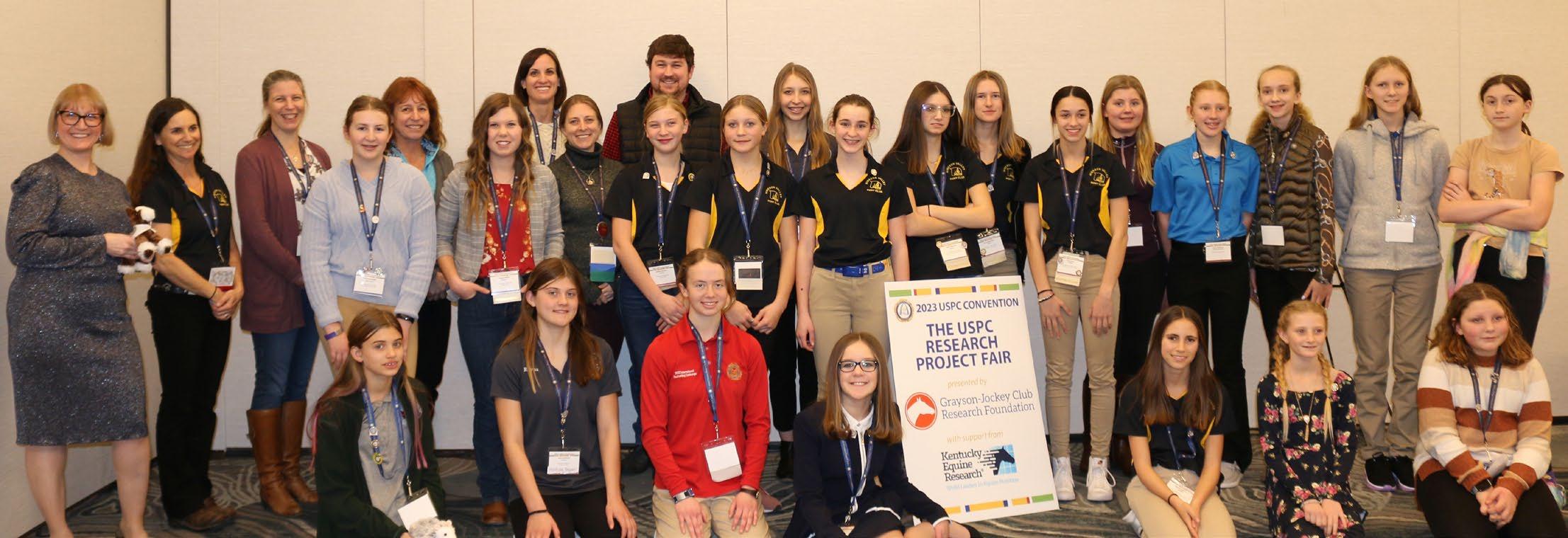 Elizabeth Moyer/United States Pony Clubs
The largest Research Project Fair ever.
Elizabeth Moyer/United States Pony Clubs
The largest Research Project Fair ever.
Leadership Takeaways
Representatives from 36 Pony Club regions worked together to learn about and expand Pony Club programs for current and future members. The convention kicked off with a full day of education for Pony Club’s leaders across all levels. Sessions covered a mix of broad and detailed topics through presentations, group panels, and smaller breakout sessions.
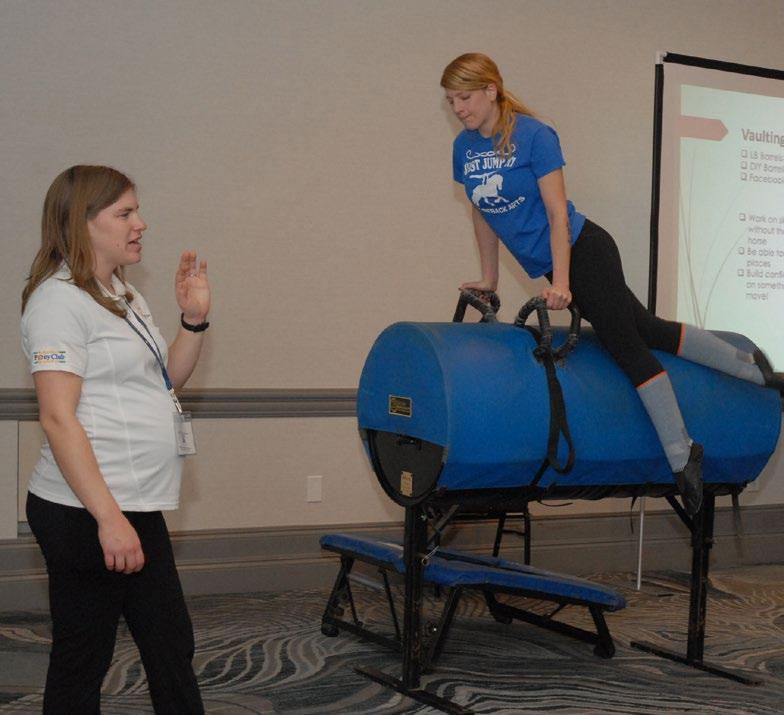

“I would highly recommend the leadership training just to learn more about Pony Club and to interact and network with others who are holding similar roles,” said Jolyn Rasmussen, District Commissioner (DC) of Boise Pony Club in the Intermountain Region, who has attended for several years. She added that in the past she has really found the professional development training useful, not only for Pony Club, but also in her professional and personal life.
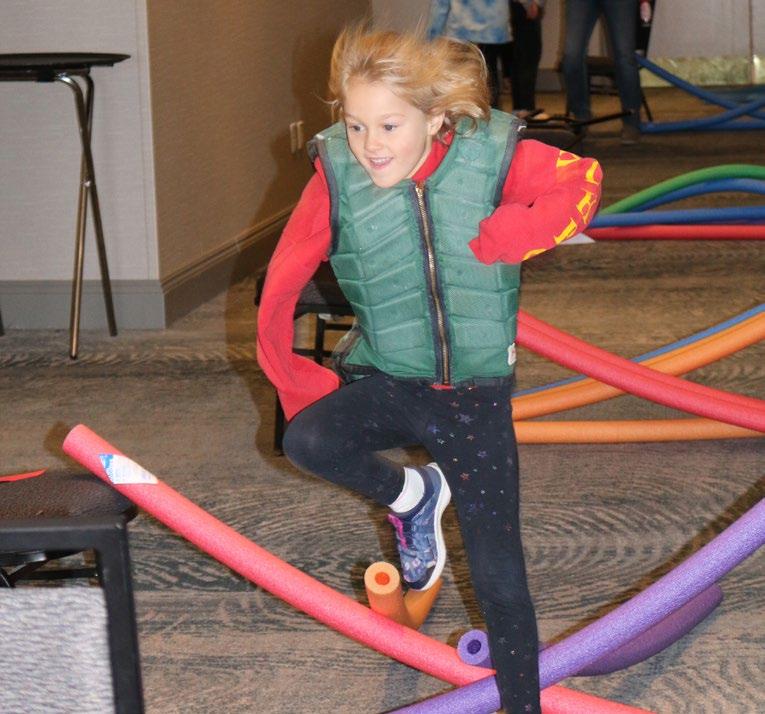
Kelsey Cartwright, Joint District Commissioner (JtDC) of the Racine County Pony Club in the Lake Shore Region, attended for the first time since she was a youth member, and she was happy to connect with people from her whole region. She commented that Pony Club has a great program. “Its dedicated passionate people are what make the program great,” she said. “Learning what my responsibilities are is
always really important, and learning from people who have been doing it is the best way to learn. I think having our support from our peers and having other people you can rely on to ask questions is really beneficial.”
On Friday, Pony Club leaders and members enjoyed a day of professional development sessions with guest speaker Jay McChord, who works regularly with equine industry organizations on ways to communicate and collaborate more effectively in today’s multigenerational environment. McChord proved to be an engaging speaker and received rave reviews and requests for future training. The training was supported by Specialty Program Insurors and the Mattingley Leadership Training Fund.
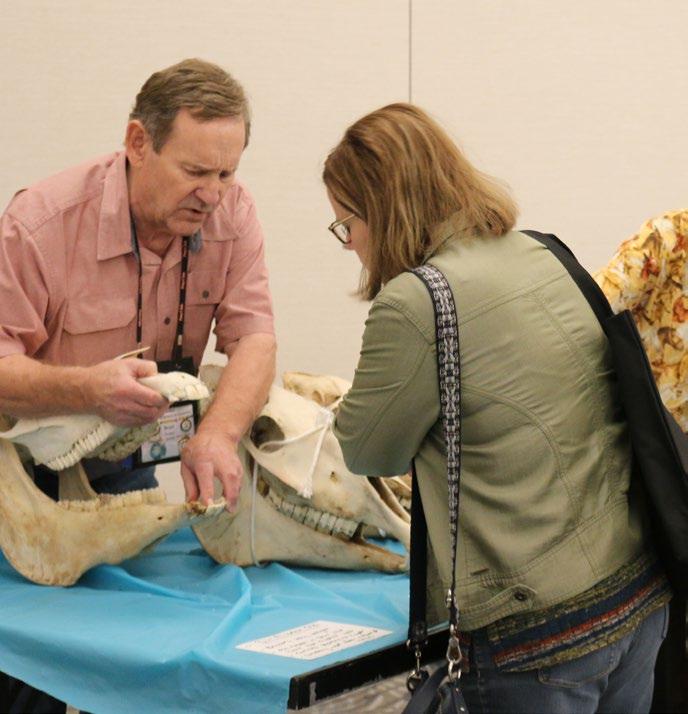
Lorelei Coplen, USPC Vice President of Regional Administration, appreciated the value in bringing together leaders from different roles across the organization to focus on mindset and communication.
“Among the many benefits [is that] these combined seminars provide the organizational leaders a common language or an understanding baseline. As an example, I suspect the phrase ‘same storm; different boat’ may become shorthand inside regions as they parse their budgets and calendars for a program year,” she shared.
20 DISCOVER USPC Spring/Summer 2023
Elizabeth Moyer and Sarah Evers
Conrad/United States Pony Clubs
Pony Paddock always has creative activities for young kids.
Vaulting workshop Anatomy Lab
Wendy Murdoch presented one of the educational workshops.
Future Leaders

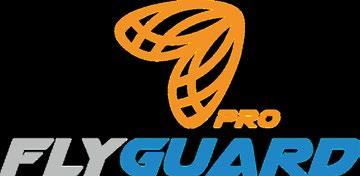

Friday’s Convention activities also welcomed 21 delegates to the 2023 National Youth Congress (NYC) thanks to support from the Western & English Sales Association (WESA), as well as honoring three inductees into this year’s Academy of Achievement: Sandra Gebhart, DVM; Deb Kirsch, and William West “Wes” Thompson.
The USPC National Youth Congress is a program that recognizes outstanding national-level members (H-B through A) with an opportunity for networking, personal growth, leadership, and skill-building. At Convention, the young adult delegates met with the Academy of Achievement inductees and other accomplished Pony Club alumni and worked together on creating three proposals to present to the Board of Governors.
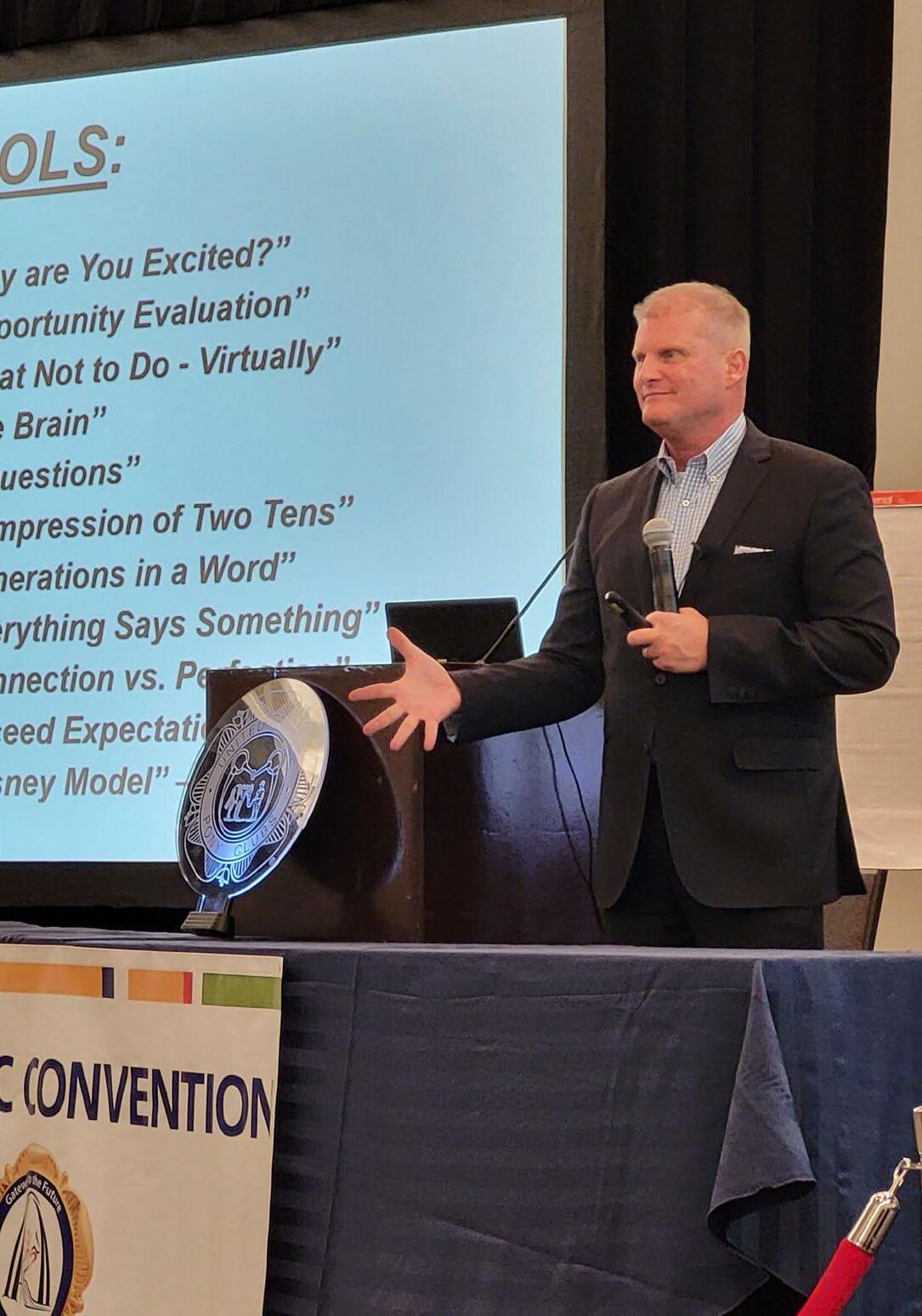
The National Youth Board (NYB) is another leadership program in USPC in which members act as liaisons between the youth membership of USPC and the Board of Governors. They bring forward ideas and proposals regarding important issues and conduct independent projects under the direction of the National Office. Members are 18-23 years of age and must apply for a twoyear term. On Saturday, six new NYB members joined those in their second year to line out various SMART goals for the year, choose committee assignments and officers, and talk about projects that could make an impact on USPC.

21 ponyclub.org D E S I G N E D I N U K D U R A B L E F O R T H E F I E L D S E C U R E F L Y P R O O F M E S H S H I E L D 5 * F I T U S E D B Y W I N N E R S Q U I C K F I T S E C U R E S T R A P S C O N T O U R C O M F O R T F I T E A S Y C A R E F A B R I C S (603) 929 - 3880 WWW SHIRESEQUESTRIAN COM
Karol Wilson//United States Pony Clubs
Jay McChord, Professional Development speaker
Education for Equestrians
Educational workshops are always a highlight of the convention—whether in person or virtual. This year’s topics delivered important horse management and horse health information, including deworming, dental care, vaccinations, digestive health and emergency care, plus insights on equine behavior, rider fitness and sports psychology, career opportunities in the equine industry, as well as updates on safe trailering, helmet safety, and much more. Virtual workshops included saddle fit, grooming, and other topics of interest.
“As an associate professor in equine education, I was inspired by the enthusiasm and passion I saw in the young equestrians at the USPC Convention,” shared Sara LindePatel, associate professor and equine studies program chair at Stephens College, which was the title sponsor of the event. “We left the convention excited and inspired by the up-and-coming equestrians that we met.”
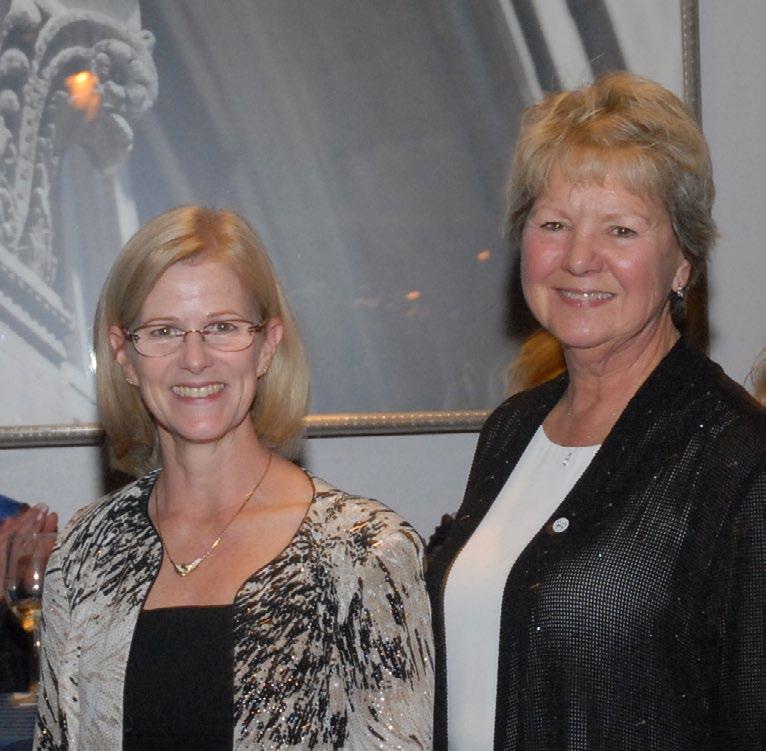
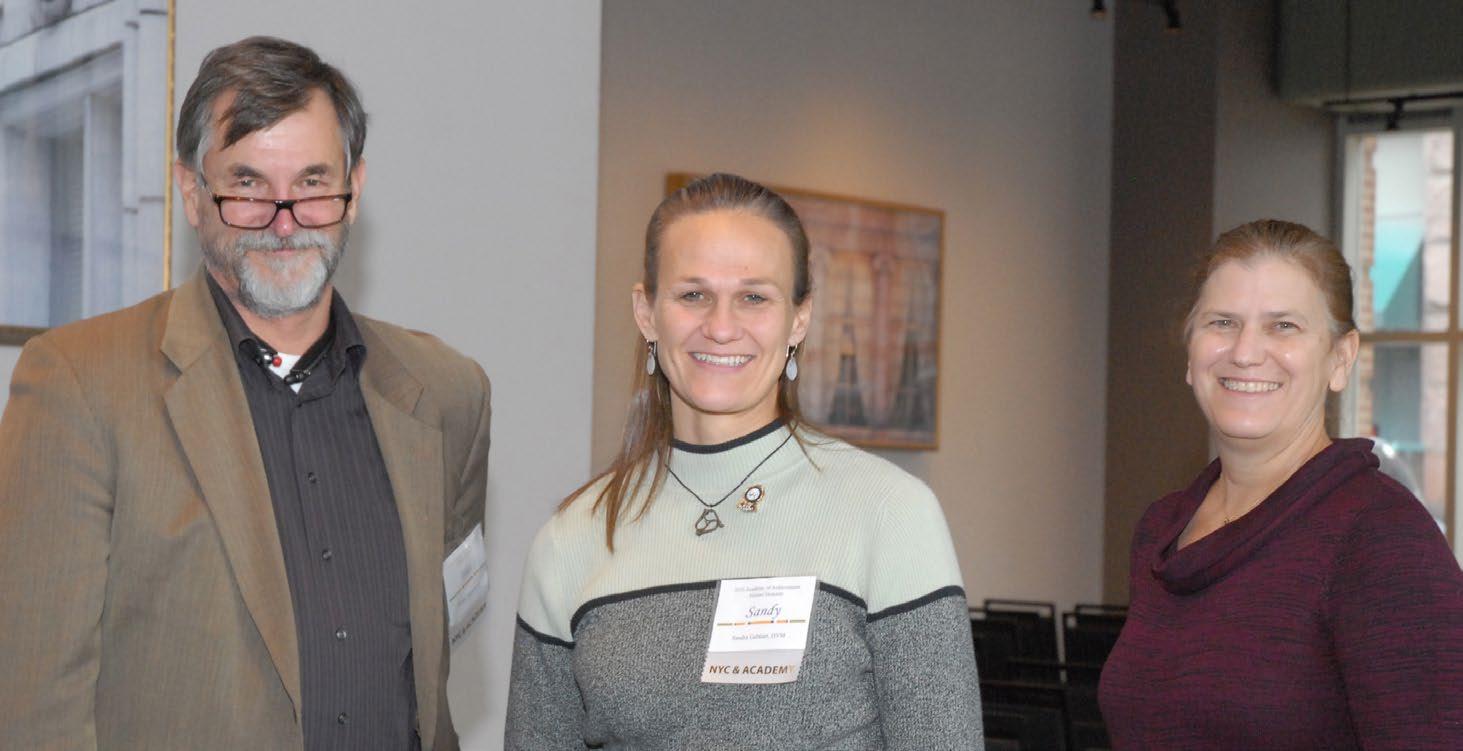
In addition to workshops, the 2023 USPC Convention offered a variety of hands-on opportunities. One favorite

for attendees was the Anatomy Lab, which was sponsored by Banixx Horse & Pet Care. The lab is headed by Pony Club graduate and equine veterinarian Brad Gordon, DVM, and vet tech and longtime Pony Club volunteer Cindy Healy, along with a team of experts. It offered hundreds of specimens and education on equine anatomy, including structures and systems from head to hoof.
Pony Club members also got advice to prepare for Horse Management at rallies and interacted with hands-on displays as they tested their knowledge in the Horse Management Room, sponsored by Indian Hills Thoroughbred Farm.
The youngest attendees enjoyed horse-related activities and educational fun in the Pony Paddock, sponsored by the Arabian Horse Youth Association, Breyer Model Horses, and Trafalgar Square Books. Longtime Pony Paddock National Coordinator Lisa Reader, who is well-known for her Hawaiian shirts, creative youth activities, and way of wrangling kids, is now passing on the baton for coordination of Pony Paddock to new Board member Sedate Kohler.
22 DISCOVER USPC Spring/Summer 2023
Sarah Evers Conrad/United States
Pony Clubs
Lisa Reader, National Coordinator for Pony Paddock
Academy of Achievement Honorees: Wes Thompson; Sandra Gebhart, DVM; and Deb Kirsch
Founders Award: Stacy Yike, who accepted for sister Brenda Yike, and Debra Sue Waters
A Record for the Research Project Fair
The USPC Research Project Fair, presented by GraysonJockey Club Research Foundation with support from Kentucky Equine Research, was popular with members of all ages and levels, with a record 37 participants presenting 29 total projects, both in person and virtually. For complete results, go to www.bit.ly/2023-uspc-researchproject-fair-results
Saturday Night Banquet Celebration
The Saturday Night Banquet was a highlight as attendees celebrated the recipients of the USPC Founders Award, honoring dedicated longtime volunteers Debra Sue Waters and Brenda Yike (accepted posthumously by her sister, Stacy Yike). Five-star eventer and A-level Pony Club alum Allison Springer presented the keynote address, sponsored by Brooke USA Foundation. Springer shared how she got her start in Pony Club and how her experiences in USPC laid the foundation for her future success as a rider, trainer, coach, and equine welfare ambassador.
The 2023 USPC Convention was possible thanks to the support of our sponsors, including Convention title sponsor Stephens College; supporting sponsor Via Nova Training; USPC corporate sponsors Kerrits, Shapley’s, The Horse, Triple Crown Nutrition, Wintec, and Zoetis; and event sponsors, including the American Association of Equine Practitioners, Arabian Horse Youth Association, Banixx Horse & Pet Care, Breyer Model Horses, Brooke USA Foundation, Dressage4Kids, Fair Hill Saddlery, Grayson-Jockey Club Research Foundation, Indian Hills Thoroughbred Farm, Kentucky Equine Research, the Mattingley Leadership Training Fund, Santa Cruz Animal Health, Specialty Program Insurors, Trafalgar Square Books, Unicorn Trails, University of Missouri College of Veterinary Medicine, and Western & English Sales Association.
See You Next Year
Proposals are now being accepted until July 1, 2023 for the 2024 USPC Convention from educational workshop speakers. If you are interested in being a speaker, visit www.pheedloop. com/2024convention/site/workshops.
The USPC Convention is an educational, energizing event that offers something for everyone. Best of all, it brings the Pony Club community together with a sense of renewed pride and dedication for the organization and its mission. We hope to see you next year.
Save the Date for 2024
The 2024 USPC Convention will be held January 24–28 at the Peppermill Reno Resort in Reno, Nev. For details on the 2024 event, visit www.ponyclub.org/Events/ Convention.
Awards and Achievements
Many Pony Club awards were presented at the Saturday morning Meeting of the Corporation. Six clubs were recognized for their member dedication and longevity with the United States Pony Clubs, and they received the Club Milestone Award, given to clubs reaching their 25th or 50th anniversary years.

“These long-standing clubs have shown an incredible commitment to Pony Club, providing an example and inspiration to all,” said Karol Wilson, USPC Director of Member Services and Regional Administration. “The dedication of their leadership is essential to USPC, and we are proud to recognize these important milestones.”
The following clubs were recognized with 25-Year Club
Milestone Awards:
■ Live Oak Hounds Pony Club (Sunshine Region)
■ Tidewater Pony Club (Delmarva Region)
■ Two Rivers Pony Club (Northern Lakes Region)
The clubs below were honored with 50-Year Club
Milestone Awards:
■ East Aurora-Lake Erie Pony Club (Western New York Region)
■ Piedmont Pony Club (South Region)
■ Tecolote Pony Club (Camino Real Region)
The following members were honored for achieving A-level certifications during 2022:
■ Audrey Buchanan (Mr. Stewart’s Cheshire Foxhounds Pony Club, Eastern Pennsylvania Region)
■ Margaret Buchanan (Mr. Stewart’s Cheshire Foxhounds Pony Club, Eastern Pennsylvania Region)
■ Eleanor Goldfarb (Middle Tennessee Pony Club, Midsouth Region)
■ Genevieve Munson (Northwest Arkansas Pony Club, Midwest Region)
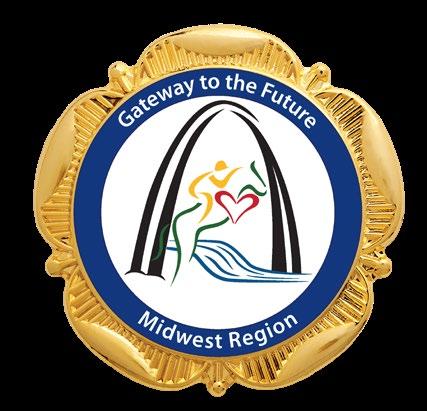
“We are proud of our newest A recipients and the level of dedication and excellence this award represents,” said Connie Jehlik, USPC Instruction Services Director. “I know all of these members will continue to achieve great success in future pursuits.”
The Brookfield Land Conservation Award was presented to Tidewater Pony Club from the Delmarva Region, while the Flash Teamwork Award went to beloved Pony Club mount Princess Fiona, owned by Beth Walkowicz and nominated by Lori Gmerek, DC of East Aurora-Lake Erie Pony Club in the Western New York Region.
23 DISCOVER USPC ponyclub.org
Ponying Around the Inter-Pacific
By Keely Bechtol,
As a National member of the United States Pony Clubs, I served as a team member on the 2023 Inter-Pacific Exchange (IPE) U.S. team. I joined Bluegrass Pony Club in the Midsouth Region when I was 5 years old. I currently focus mostly on Show Jumping, but I also have a background in Eventing and Mounted Games. I earned my H-A, B Show Jumping, and C-3 Eventing certifications, and hope to take my A in Show Jumping in July.
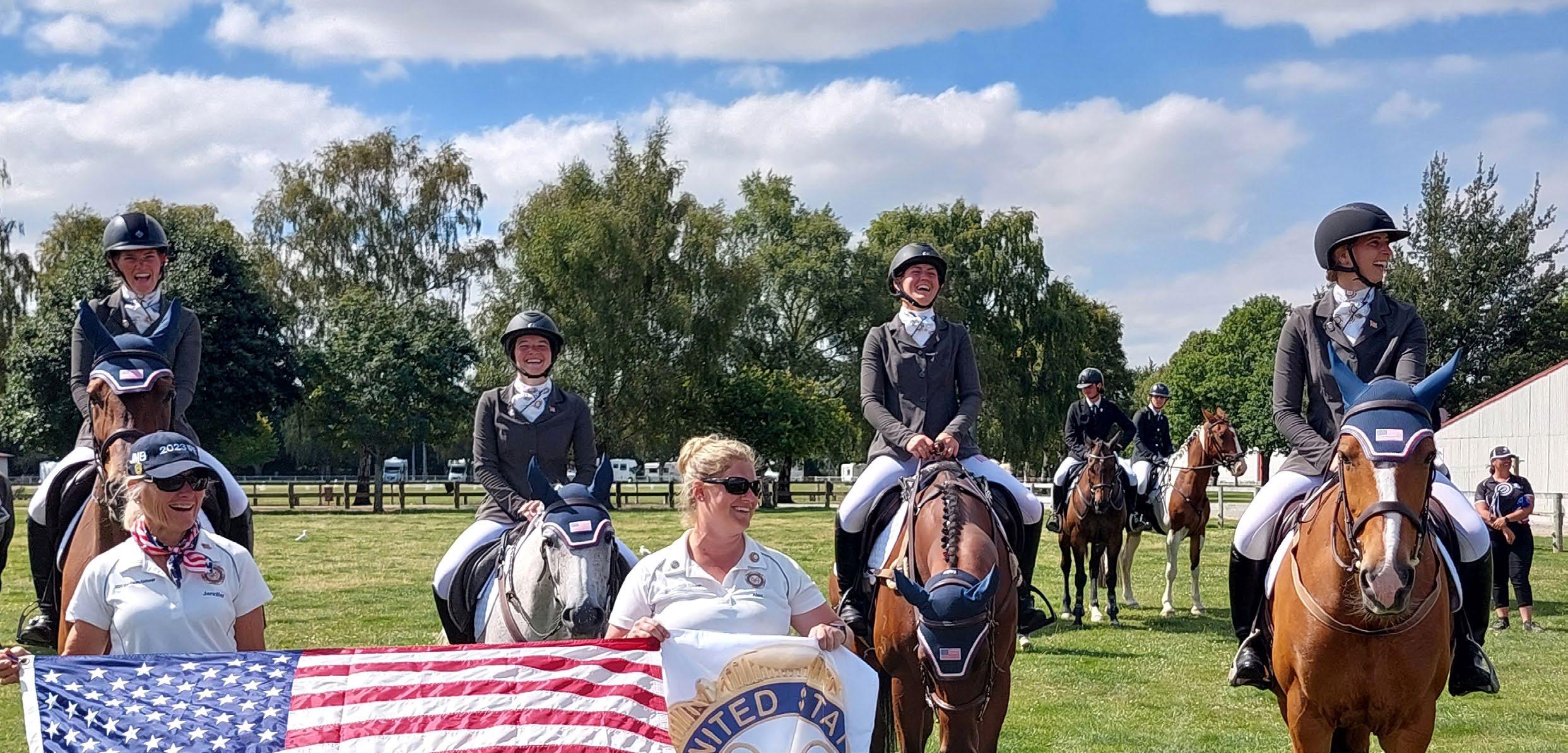
I enjoy giving back to the organization that has shaped me into the person I am today by teaching at local meetings, being an Assistant Horse Management Judge (AHMJ), and coaching at rallies. I am also currently studying marketing and sales at the University of Kentucky.
The International Exchanges are amazing opportunities to travel abroad, meet new people, and experience the host country’s culture. They focus on how other countries demonstrate horsemanship and their riding abilities, but also place a huge focus on experiencing the culture and meeting new people. Team members must have: a strong record of service to Pony Club, strong ambassador qualities, a background in riding a variety of horses, and strong references.
Every two years, the IPE rotates host countries among the United States, Hong Kong, Australia, New Zealand, and Canada, and can be a mixture of Show Jumping and Eventing competitions, depending on the donated horses and available facilities. Hong Kong could not send a team this year.

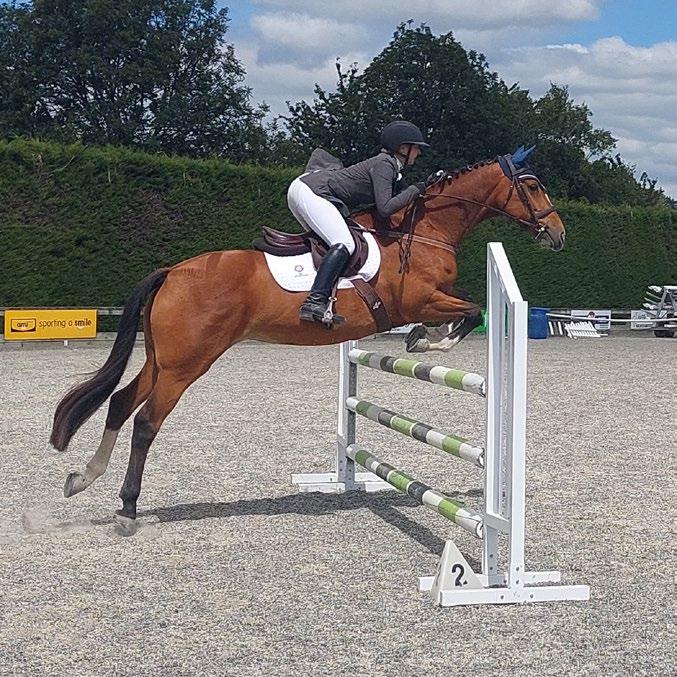
This year, the IPE was held in
New Zealand. We spent 2½ weeks touring and experiencing New Zealand’s culture, along with riding and competing. Doing a Pony Club International Exchange has been a dream of mine since I joined Pony Club. It’s an amazing opportunity to see the world with likeminded people who come together from all walks of life to share their love of horses and Pony Club. It’s a symbol of how far you’ve come in the organization, from a D-level member to someone who can catch-ride any horse and represent the organization and your country.
I grew up with Nora (Eleanor) Goldfarb, A Eventing, of Middle Tennessee Pony Club in the Midsouth Region, and we played Mounted Games together; we both competed on the USPC Pony Jumper team at the United States Equestrian Federation (USEF) Pony Jumper Championships, which takes place each summer in conjunction with the USEF Pony Finals; and we took almost all of our national certifications together. We both always wanted to do the IPE together. We helped each other with our applications and were both selected!
We met our other teammates in Atlanta, Ga., for a two-day team camp before New Zealand. Sierra Shurtz, B Eventing, is a participating member of Piedmont Pony Club in the South Region and also the District Commissioner of that club. Emily Thomas, H-A HM and B Eventing, is a member of Greenville Foothills Pony Club in the Carolina Region. The team instantly had amazing chemistry. We bonded further on our long flights, and even got to spend the day in
24 DISCOVER USPC Spring/Summer 2023
Nora Goldfarb (top) and author Keely Bechtol (bottom) both dreamed of being in the Inter-Pacific Exchange.
Inter-Pacific Exchange Team Member; Photos Courtesy B. Eaves Photography
IPE Coach Jennifer Merrick-Brooks and Team Manager Alex Ambelang (standing, left-right) with riders (mounted left-right) Emily Thomas, Keely Bechtol, Sierra Shurtz, and Nora Goldfarb
Sydney, Australia, on our way to New Zealand. Alex Ambelang, an H-A, B Eventing alum of Big Sky Region, served as Team Manager. And Jennifer Merrick-Brooks, A Eventing, an alum of the Canadian Pony Club, was the IPE Coach.

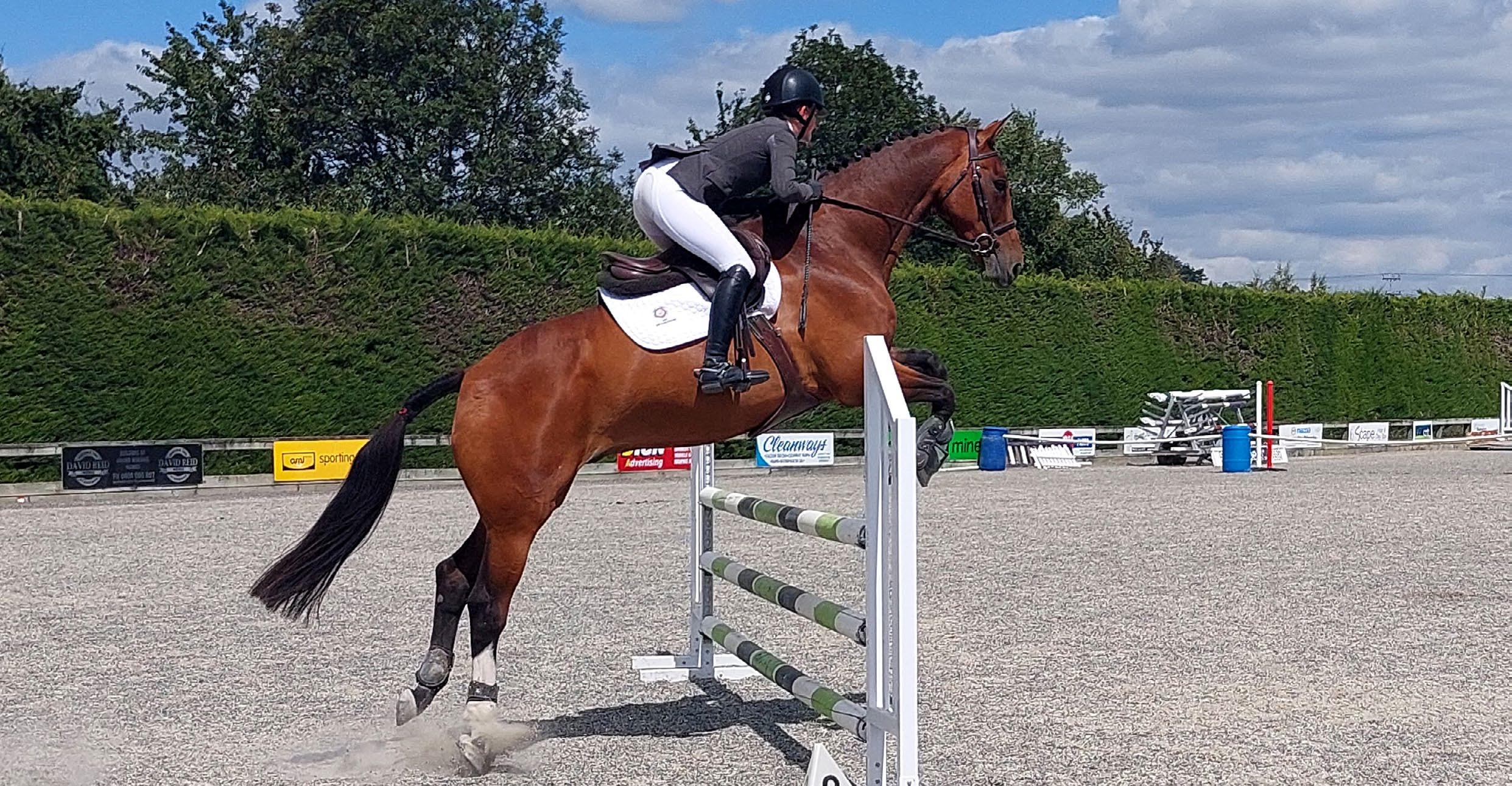
Not only will the friendship between my teammates last a lifetime, but also the friendships with the teams from the other countries, including the managers and coaches. Most of us already have plans to visit or host a member from a different country sometime soon. I feel so blessed to have been able to meet and become friends with the other members of the exchange.
The New Zealand Experience

We traveled on a tour bus to different areas of the South Island of New Zealand and saw some amazing sights—from Mount Cook National Park to the Tasman glaciers and icebergs, Lake Tekapo, and the Clay Cliffs. We hiked some of the most amazing treks and saw some beautiful beaches. The scenery is so incredibly picturesque that words cannot do it justice. We rode go-carts, spent a day at the hot springs, and rode the Queenstown Luge, along with countless other activities.
In the first few days, we were able to see some sights in Christchurch. We jumped right into the Pony Club spirit at the South Island Show Jumping Championship held at Eyreton Pony Club grounds. We spent the day meeting competitors, touring the grounds, and helping set fences. We loved getting to watch a different style of riding and interacting with the Pony Club members in the competition. We got to enjoy a barbeque at the house of the alternate for Team New Zealand, where we bonded with the teams from other countries with some fun games and learned some new games unique to New Zealand.
Before the competitions, we went to equestrian Jess Land’s facility and rode some of her horses. It was our first taste of riding New Zealand horses. While we noticed some differences in the way horses are schooled in New Zealand versus the States, the horses were great, and we had an amazing time.
In Cromwell,the “Kevin Cup” was our first competition. This was a fun competition where we were on scramble teams with one member from each of the other countries, and the coaches and team managers were allocated to different teams. The competition was in the form of a combined test, all on the grass in the infield of the Cromwell Racecourse. It was so cool to see sheep grazing on the other side of the infield.
We had about 40 minutes to ride the day before the competition, and we had
a great time getting to know them. All the horses were graciously loaned by nearby Pony Club members and supporters. We also attended an owners’ dinner, where we got to know the owners and learn more about New Zealand, from its history to its horse industry. At the end of our trip, we competed in the Nations Cup held at the South Island Pony Club Championships in Gore. On the first day, we were able to meet and school our horses to get to know them. I had the ride on a 13.3-hand mare named Smarty, who was a champion Mounted Games pony and show jumper. The Nations Cup is held with the team format and jumped over two rounds at 1.0 meter. The day before the competitions, the coaches drew for the order that the teams would compete in. The first round of the competition is jumped in the order drawn, and the second round is jumped in the reverse order of faults. Because the U.S. was in the lead after the first round, we jumped last in the second round. If there is a tie for a medal position after the second round, one rider from the teams that are tied would ride in the jump-off to break the tie. My teammates were all on fantastic horses and rode great to bring home the gold for the U.S. Pony Clubs team.
In all, my IPE experience was too amazing to sum up. I would wholeheartedly recommend anyone eligible to apply and for everyone to strive for their national certifications so that they can have this amazing opportunity. I have friends and memories that I will cherish forever thanks to USPC, the New Zealand hosts, and all our incredible supporters.
 Winston
Tan/Shutterstock
Emily Thomas, H-A HM and B Eventing, of Greenville Foothills Pony Club in the Carolina Region rode Ludo in the IPE.
The U.S. IPE team saw parts of New Zealand, such as Mount Cook National Park.
Winston
Tan/Shutterstock
Emily Thomas, H-A HM and B Eventing, of Greenville Foothills Pony Club in the Carolina Region rode Ludo in the IPE.
The U.S. IPE team saw parts of New Zealand, such as Mount Cook National Park.
MANE & TAIL MANAGED
By Liv Gude, Brought to you by Shapley’s Grooming Products, the Official Grooming Products Sponsor of USPC

It’s well known that a horse’s hair coat is designed for insulation, waterproofing, and to help the horse regulate his temperature. And while the mane and tail certainly make our horses even prettier than they already are, they also serve many purposes. The mane keeps the neck warm and dry, the tail acts as a communication tool, and both the mane and tail protect the horse from biting insects. With such important functions, it’s important to keep the mane and tail as healthy as possible.
Create Healthy Hair
Horses have different types of hair. Tactile hairs, such as whiskers, inner ear hair, and eyebrows, are called vibrissae, and these often-thicker hairs have nerve endings to help your horse feel their environment. Body hair, which sheds twice a year and regrows afterward, is considered temporary hair, while a horse’s mane and tail are considered permanent hair. Feathers and eyelashes are also permanent hair.
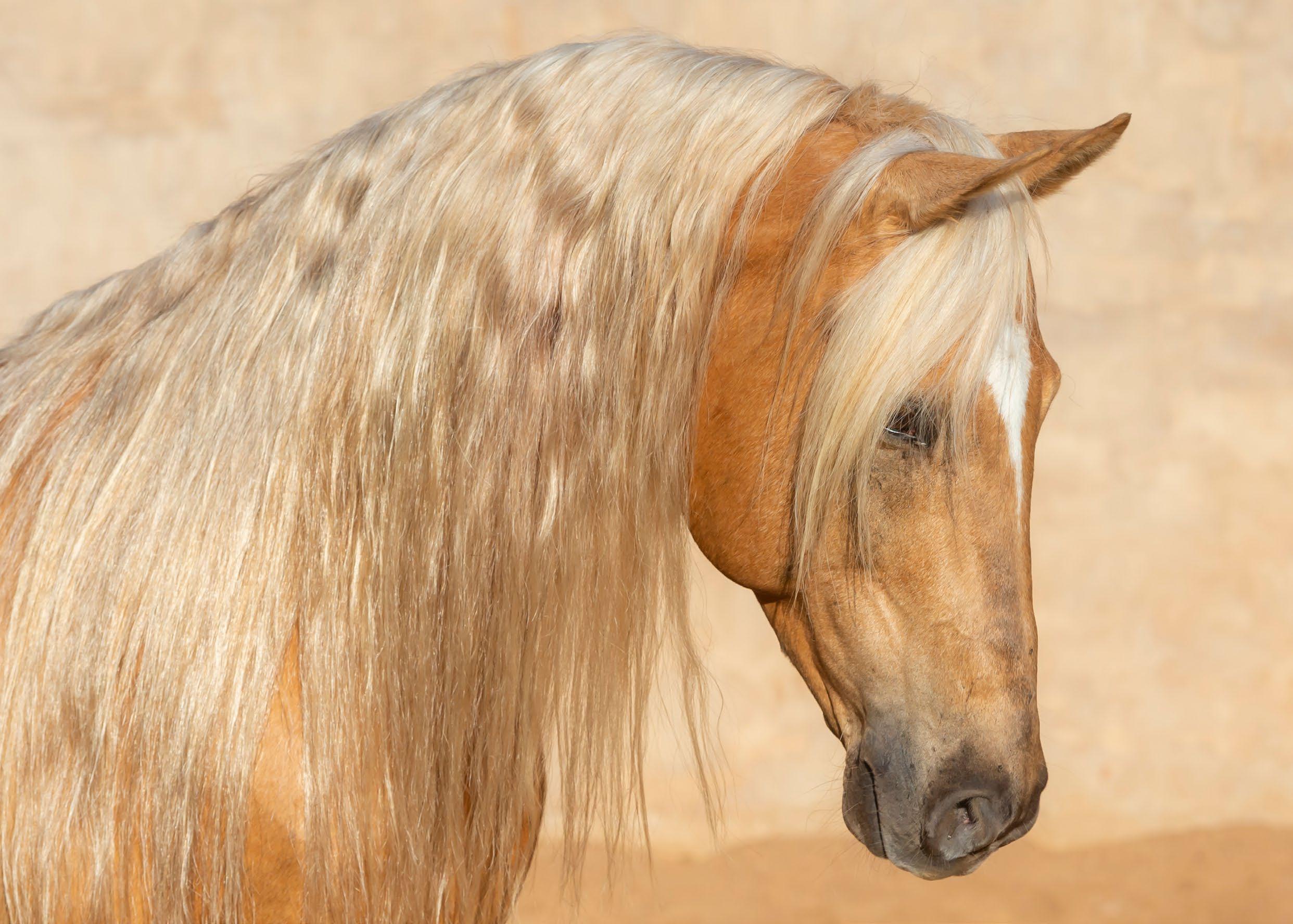
Permanent hair has a life cycle. Each hair grows for a determined length of time and then is released from the follicle, a tubelike structure embedded deep in the skin that holds a hair root and strand. After release, a new hair forms in its place. It’s normal for the mane and tail to lose hair when brushed, just like human hair.
Healthy horsehair is strong, soft, stainresistant, and less prone to breakage. Several factors affect the growth of a healthy coat.
Horses need a well-balanced, forage-based diet, including omega fatty acids, vitamins, and minerals. Daily care, grooming, tick prevention, bedding cleanliness, and your horse’s genetics also contribute to how strong and healthy the mane and tail are.
When the hair is dry, brittle, and unhealthy, it breaks, becomes easily stained, and looks dull and frizzy. It’s also more likely to get tangled and pick up burrs.
Daily Mane and Tail Care
When you groom, spend quality time on the mane and tail. Inspect, and feel, the base of the mane for ticks, lice, scabs, lumps, scrapes, and anything that wasn’t there the day before. Concentrate your efforts on the skin first, then pick out debris as needed and brush the mane. Notice if the hair is greasy, sticky, dry, or stained.
On the tail, inspect the skin underneath and at the hair’s base. Like the mane, look
26 DISCOVER USPC Spring/Summer 2023
GROOMING GOALS Shutterstock/Jaco Wiid
and feel for any issues. The tailbone’s underside is soft skin and may have irritations or scrapes. Pick any large pieces of shavings or twigs from the tail and proceed with brushing.
Tools for Mane and Tail Care
Using brushes and wide-tooth combs prevents mane and tail hairs from being pulled out before their time. Start from the bottom of the mane and tail, slowly brushing or combing your way up.

You may also want a detangler to help your brush or comb to glide through the hair. Detangling sprays are handy to spritz the mane or tail. They provide a light covering, slickness, and some shine.
You can use a conditioning grooming oil if the mane and tail are dry and crisp, as they have the same benefits as a sheen spray plus conditioning. Massage a quarter-sized dollop through the mane or tail to detangle.
Skin and Hair Healing
If your horse has a skin condition, try using a product formulated for skin health and hair growth. These grooming products can also help with itchy skin and
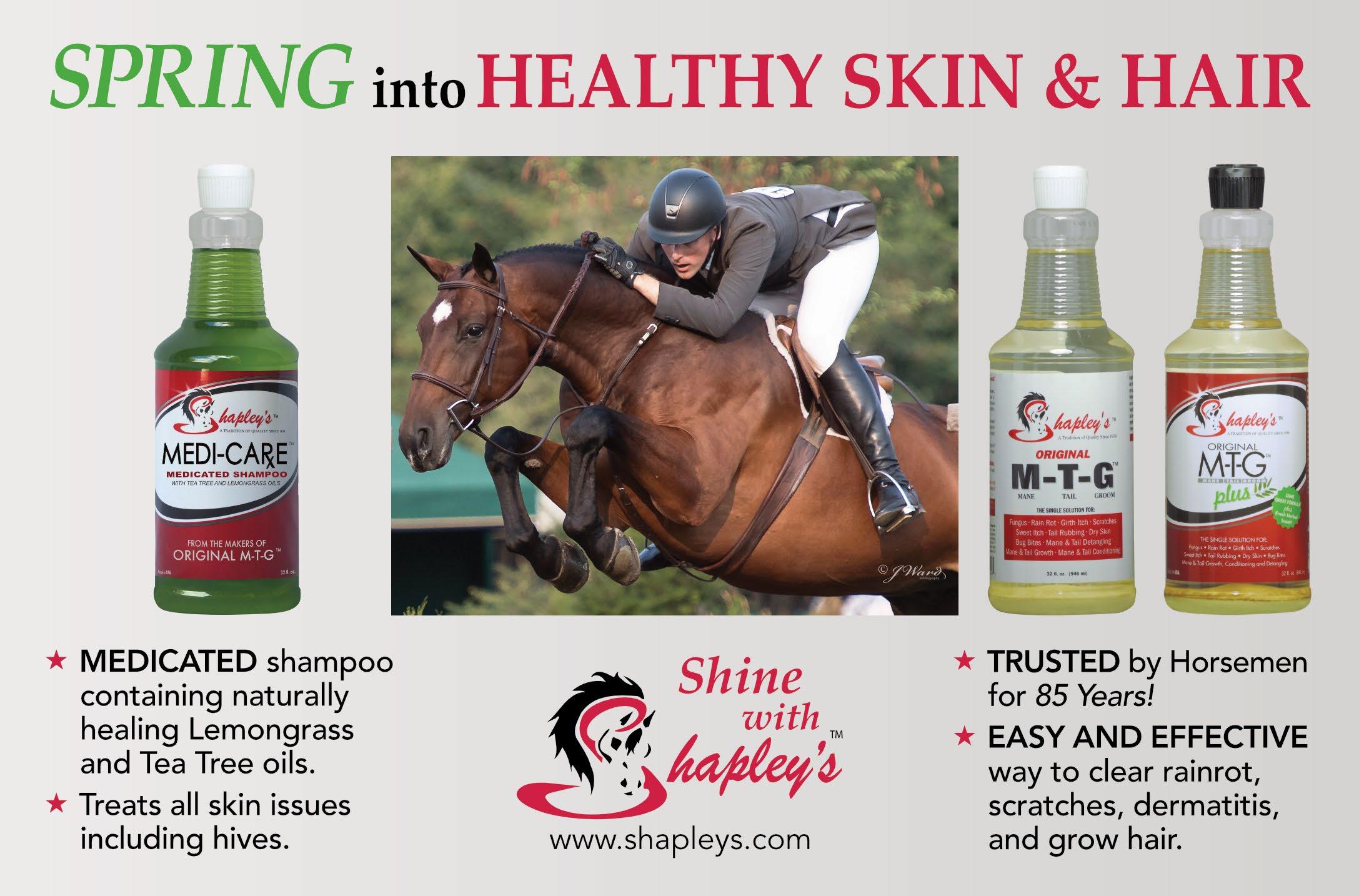
mud fever and stimulate hair growth. Use a small amount on the skin a few times a week, or follow the product directions.
To check for sensitivity, always do a patch test before using any product. It’s simple to dab a dime-sized drop to the skin on the inside of your horse’s upper front leg. After 24 hours, check for a reaction. Occasionally, a horse may develop an irritation that tells you not to use the product on that horse.
Shampoo and Condition
When you shampoo the mane and tail, use products matching your horse’s skin and hair needs. Shampoo should always be mild, and you should avoid detergents and shampoos not intended for horses.
For stained white tails or sun-bleached dark tails, try a color-enhancing shampoo to bring back color. These gentle shampoos boost color while helping stains and lighter bleached areas. Leave them on your horse for five to 10 minutes before rinsing.
For horses with sensitive or itchy skin, use a medicated shampoo with ingredients that soothe the skin while adding shine. Use a high-shine shampoo if your
horse’s mane and tail need gentle cleaning and a shine boost. Stains lift as conditioning shine is added.
It’s crucial to rinse all products from the skin and hair. Then you can condition.
The most effortless conditioners are grooming oils in light and heavy formulations. When the mane and tail are
27 DISCOVER USPC ponyclub.org
Pick knots out of the mane and tail.
Elizabeth Moyer
damp, use your hands to apply grooming oil to the hair. Start with a quarter-sized dollop, and add more if necessary. Then you can start to detangle the hair as the conditioner works. If you use too much, wait a day and shampoo out any excess. It will sink into the hair during that time.
For deep conditioning the tail, use a palmful of oil and work it in. You can braid the hair below the tailbone so the conditioner isn’t as likely to latch on to a lot of dirt, and you can add a tail bag below the tailbone to cover the braid. In a day or two, lightly shampoo any excess oil away.
Tangles and Wind Knots
Wind knots and tangles can happen from the wind, swatting flies, and just being outside. A small knot can quickly turn into a large
one, several inches wide and long.


When facing many tangles, it’s best to untangle them using grooming oil—lots of it. Your goal is to saturate the area with the grooming oil, but not so much that drips all over. Let it soak in for 10 minutes.
Then, gently pick the knots apart. Start from the bottom, and use your fingers or a wide-toothed comb. Grooming oil creates slippery hair, preventing it from breaking or ripping. If you need, add more.
When the knots are out, you can shampoo excess product away. After the shampoo, add a small amount of grooming oil into the hair for conditioning and to prevent future knots. Keep the mane and tail clean and conditioned, and groom your horse daily to keep knots to a minimum and to find
What to Do About Burrs
issues right away. If your horse’s mane and tail are long, consider banging the tail and shortening the mane.

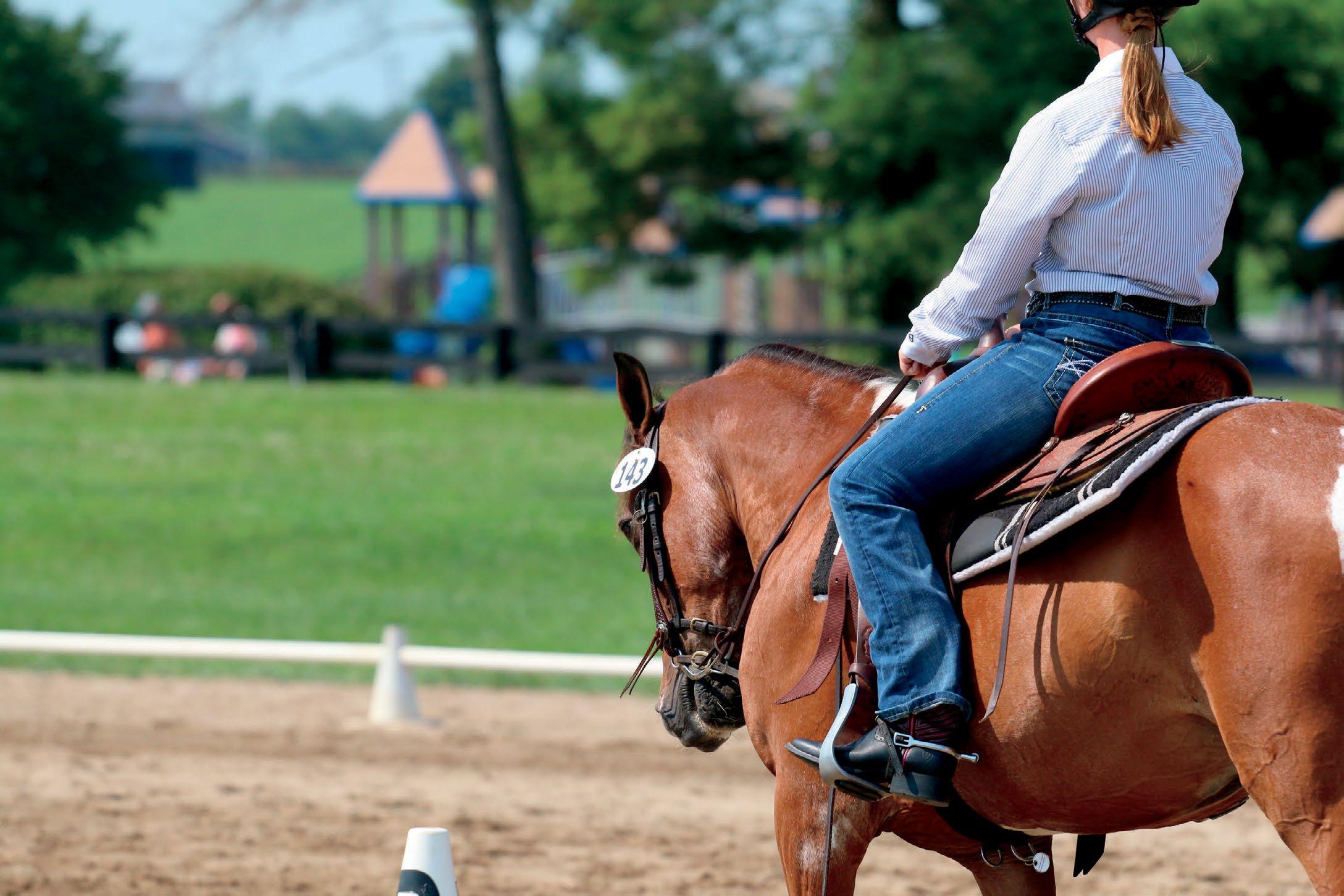
Remember that grooming is horse health care, and daily attention helps you notice the small changes in your horse’s skin and hair.
Check out all of the Shapley’s Superior Equine Grooming Products at your local tack store or online retailer to help keep your horse’s mane and tail looking great, and visit www.shapleys.com for more expert grooming advice.
Brought to you by:
Burrs, stickers, twigs, and even leaves can mess up a horse’s mane, tail, and leg hair. Treat burrs like you would a wind knot—with grooming oil. Saturate the area of burrs with your oil and wait 10 minutes. Then, untangle the burrs closest to the end of the hair and work your way up. Add more oil as needed and shampoo any extra away. Removing plants with burrs from fields is the best way to protect your horse. Tail bags are a good idea when flies and insects are not around. Also, a fly mask can protect the forelock.
28 Spring/Summer 2023
USPC F F ee ss tt ii v v aa ll July 15–22, 2024 Kentucky Horse Park Lexington, Ky.


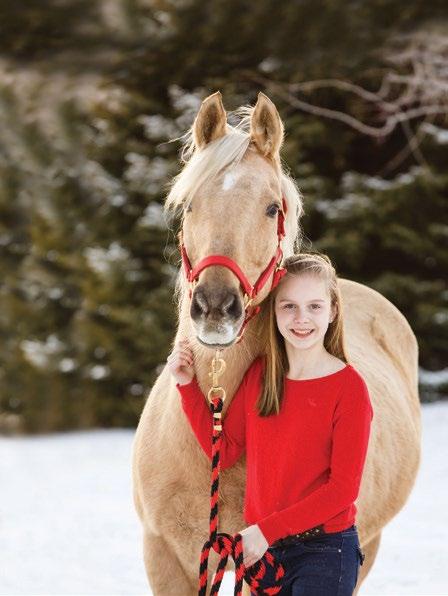































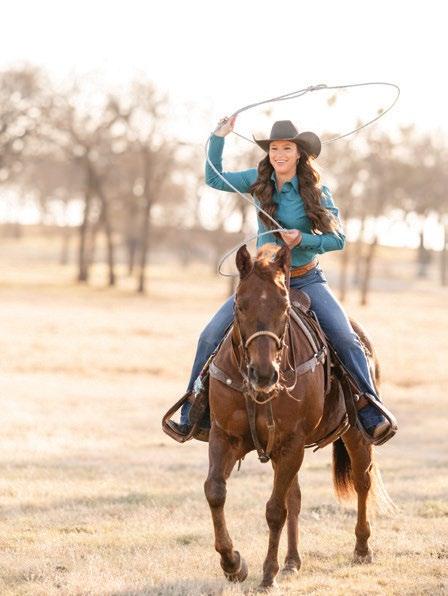
















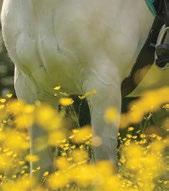


























29 DISCOVER USPC ponyclub.org SUBSCRIBE TO YOUNG RIDER! A special offer just for Pony Club members $14.99 per year (6 issues) EVERY ISSUE OF YOUNG RIDER INCLUDES: • ENGLISH AND WESTERN RIDING TIPS • HORSE CARE HOW-TOS • HORSE BREED FACTS AND PHOTOS • FUN HORSEY DIY CRAFTS AND CONTESTS • REAL-LIFE STORIES ABOUT KIDS AND THEIR HORSES • PLUS A DOUBLE-SIDED POSTER! YoungRiderFOR KIDS WHO LOVE HORSES & PONIES NOVEMBER/DECEMBER 2022 ® For your barn bestie! HOW TO STAY HORSEY WHEN YOU DON’T OWN A HORSE BLANKETING DOS & DON’TS YOU NEED TO KNOW THIS WINTER FiveCOOL FACTS ABOUT Hooves YoungRiderFOR KIDS WHO LOVE HORSES & PONIES JANUARY/FEBRUARY 2023 ® CITY KID, COUNTRY KID Find out how life is different For these young riders Cozy DIY Hand Warmers for the barn Pick the Perfect For 2023 Clicker training basics For any horse HORSE CAMP You can do it! YoungRiderFOR KIDS WHO LOVE HORSES & PONIES MARCH/APRIL 2023 GET GREEN Become an eco-conscious horsekeeper LIFE AS A TRICK RIDER Danger & excitement are the name of the game Meet the YOUTUBE MEGASTAR ESME This DIY CHOCOLATE HORSE-THEMED CUPCAKES VISIT YOUNGRIDER.COM/PRODUCT/PONYCLUB OR SCAN THE QR CODE TO PURCHASE. Crossword Puzzle Answer Key All answers come from The United States Pony Clubs Manual of Horsemanship C1-C2 Level.
NUTRITION NOTES
Selecting the right feed for your horse or pony is an important task to ensure they are getting the correct balance of nutrients for their specific needs. If you need assistance, your vet or a knowledgeable equine expert at your local feed store or horse feed company can help you make the best choice. To start, look at the feed tag on your horse’s feed bag.
There are specific things that must be listed on the feed tag/bag as a recommendation of the Association of American Feed Control Officials (AAFCO) and/or as a requirement of the Food and Drug Administration (FDA), which is responsible for the regulation of animal foods/feeds, and at the state level in cooperation with the FDA.
Feed Tag Requirements
All feed products must list the product name and a purpose statement (that includes what type of horse the feed is intended for), as well as the manufacturer’s name and address. Bags will also list a lot number (or manufactured date code), along with the weight of the bag. Nutritional information will include a guaranteed analysis indicating the feed’s nutrient content. The following are required to be listed: minimum crude protein; minimum crude fat; maximum crude fiber; maximum acid detergent fiber (ADF) and neutral detergent fiber (NDF), which are measures of a feed’s structural carbohydrate components; minimum and maximum calcium; and the minimums of phosphorus, selenium, zinc, copper, and vitamin A (if added). The feed bag/tag is also required to list the ingredients used in the formulation of the feed, as well as feeding directions.
Exploring the Purpose Statement
Provided

The purpose statement helps determine what life stage the feed is best suited for. A growth feed is specifically formulated to help growing horses and mares. A higherfat feed contains additional calories for a hard-working performance horse or for one who requires more calories to maintain body condition. Remember that although a feed may say it is intended for a specific type of horse, sometimes a horse has health concerns that may lead to another more appropriate feed choice. For instance, a performance horse who maintains weight
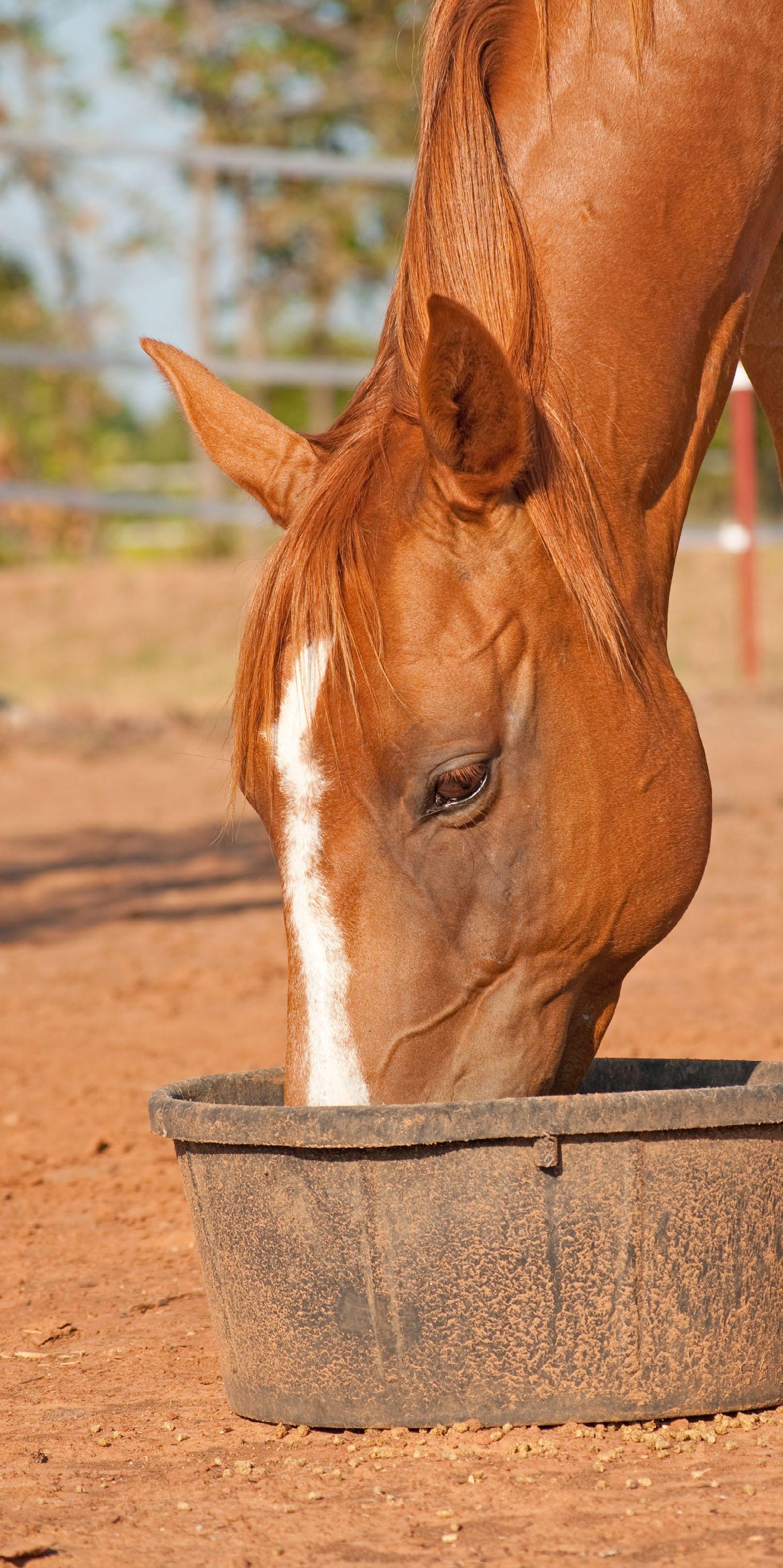
Sari ONea/Shutterstock
What Does a Feed Tag Tell You? by Triple Crown Nutrition, the Official Feed Sponsor of USPC
well and doesn’t need a high-calorie feed may need a ration balancer or lower-fat feed. Consult a veterinarian or local feed representative for advice for your specific situation.
The Guaranteed Analysis
The guaranteed analysis contains information about the levels of vitamins and minerals found in your horse’s feed. Earlier we stated what is required to be listed at the very minimum, but some companies voluntarily guarantee additional vitamins, minerals, and may even include digestion enhancements, such as enzymes, prebiotics, and probiotics. The values are listed as a guarantee to let consumers know their horse will receive the nutrients at the specified levels.


What an Ingredient List Says
Feed manufacturers are required to list all feed ingredients on the product bag. Ingredients are listed from highest to lowest inclusion rate (amount of an ingredient) in most states, but not all. Looking at the top five to seven ingredients may give you insight on the general makeup of the feed. In addition, you will find all the vitamins, minerals, digestive support, and other ingredients a manufacturer deemed important to include in the feed.
It is important to note how a specific ingredient is named on the bag/tag to determine if the formula is a fixed formula/fixed ingredient feed or a least-cost formula feed. If the product lists
Read Those
Feeding Directions!
This can be one of the most common areas where horse owners make mistakes. The feeding directions tell you how many pounds of the product you should feed daily based on a horse’s weight and work level in order to receive the level of nutrients guaranteed on the tag. Be sure you are feeding the product according to the manufacturer’s directions! If you have a horse that is not able to eat the daily minimum for reasons such as becoming overweight, you may be feeding the wrong feed. Consult a veterinarian or feed company representative for help. If you are not able to feed the daily minimum, you may simply need to add a ration balancer to help achieve proper nutrient support. Ask an expert for help in balancing various feedstuffs.
ingredients using general or collective terms such as “grain by-products” or “roughage products,” the product is known as a leastcost formula feed. For instance, if the tag lists “processed grain by-products,” nearly 40 ingredients are available to use in the formulation if it meets the guaranteed analysis. While a least-cost formula is not necessarily bad, it doesn’t tell you exactly what ingredient is being used. If you have a horse that has a feed ingredient sensitivity or allergy, this may not be the type of product you want to use. Furthermore, horses with metabolic issues should avoid products using cumulative terms since the starch and sugar value would be constantly changing.
Selecting the right feed for your horse or pony may not be easy, but it is an important task to ensure they are getting the best feed at proper amounts to help set them up for success and a healthy life.

Have additional questions about feed tags or creating a feeding program to meet your horse’s nutritional needs? Talk to a Triple Crown feed expert at www.triplecrownfeed.com or call 800-451-9916.


31
Shutterstock/BearFotos
to you by: Feed
Brought
bag image Courtesy Triple Crown Nutrition
PONY CLUB PICTURE PADDOCK
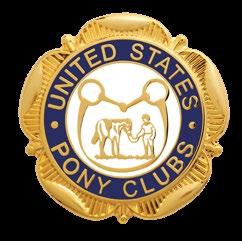
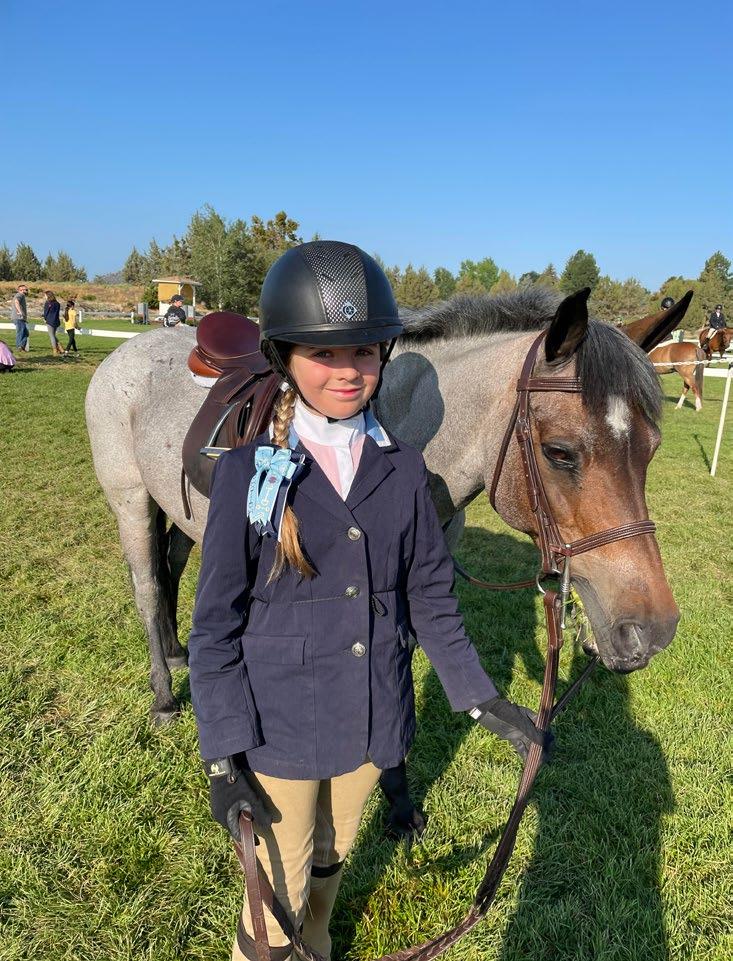
To be included, email a high-resolution image to marketing@ponyclub.org with name, Pony Club/Riding Center, and

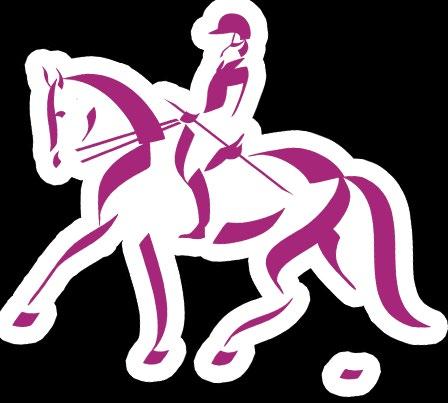

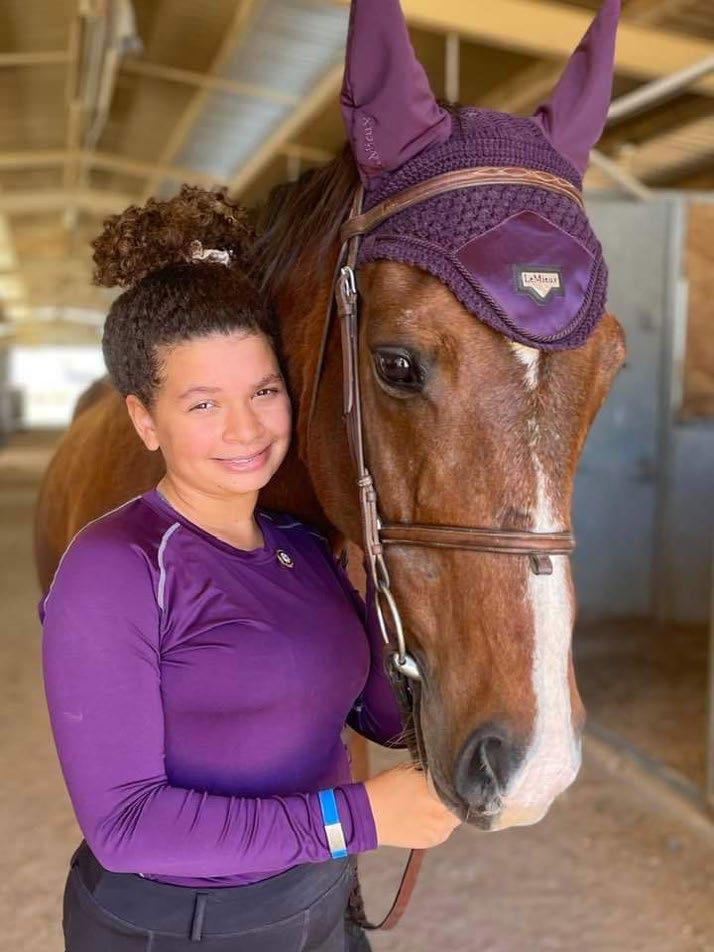
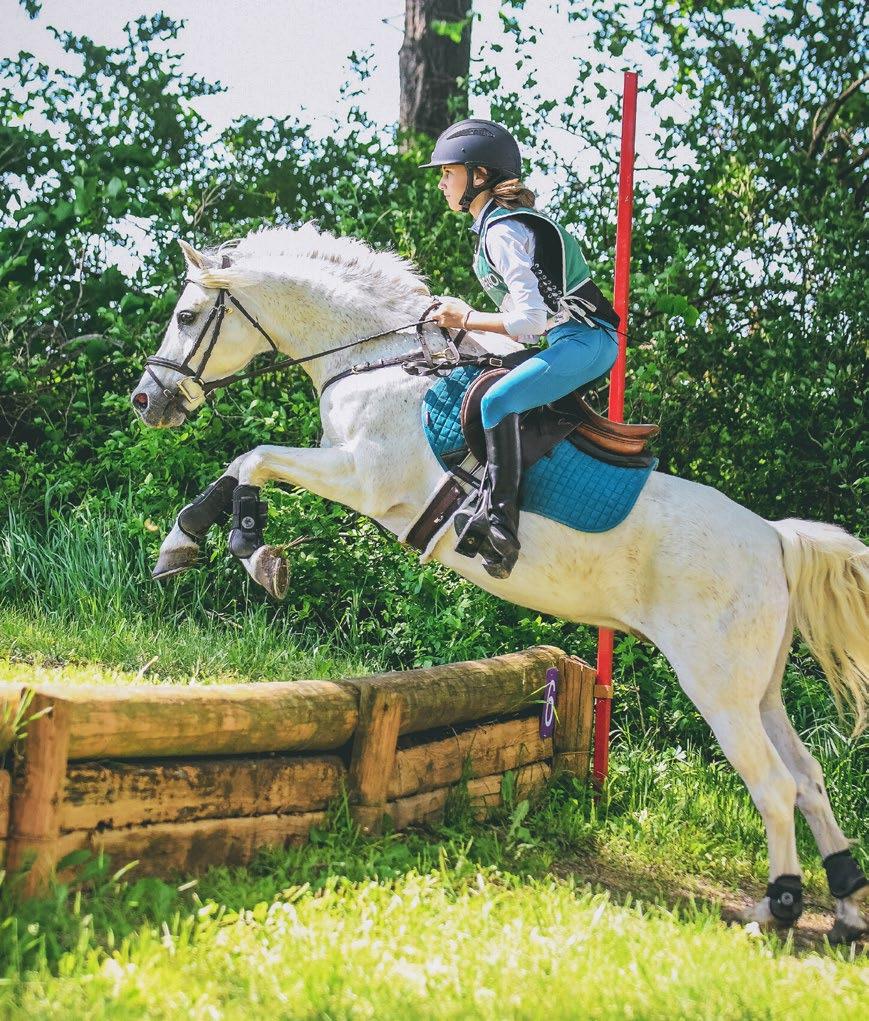
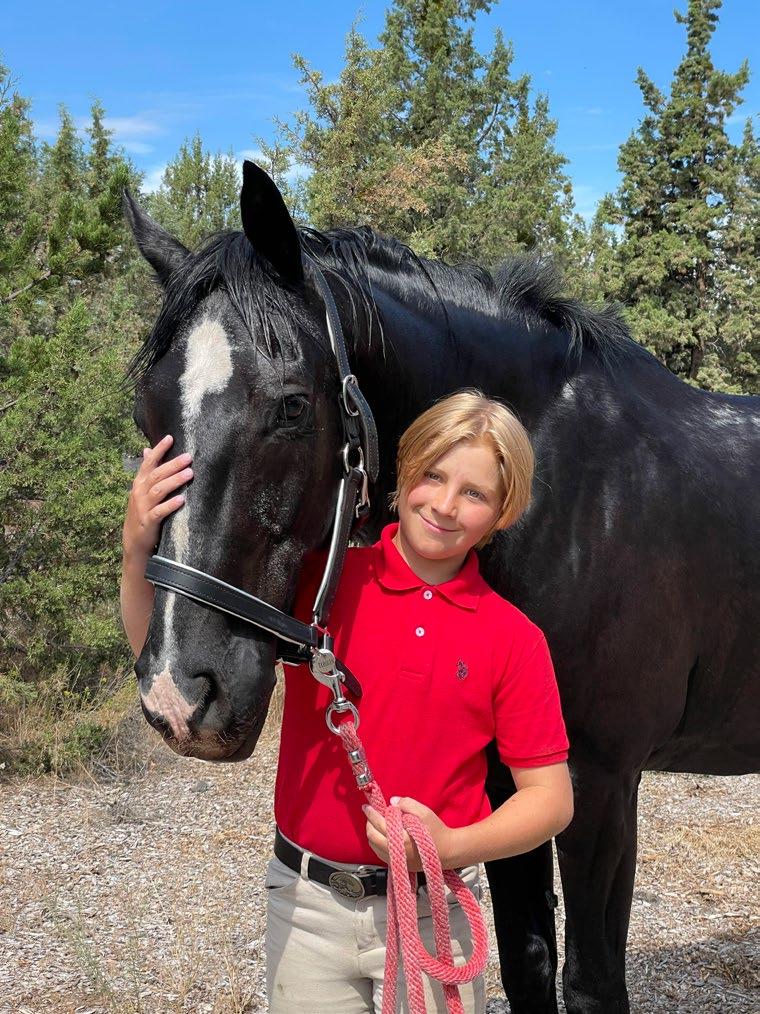

 Courtesy Rebecca Sherer
Zachary Sherer, of High Lakes Pony Club in the Oregon Region, and Tarquin
Courtesy Alison LaCarrubba
Sophia Lieberman, of Hinkson Valley Pony Club in the Midwest Region, jumping Lion
Courtesy Tracie Johnson
Karsyn Terry, of Desert Hooves Pony Club in the Southwest Region, with Solero
Courtesy Alison LaCarrubba
Mae Lieberman, of Hinkson Valley Pony Club in the Midwest Region
Courtesy Rebecca Sherer
Jacqueline Sherer, of High Lakes Pony Club in the Oregon Region, and Jedi Mind Trick
Courtesy April Wilde
London Wilde, of Cardinal II Pony Club in the Carolina Region, piloting Mateo
name of horse.
Courtesy Rebecca Sherer
Zachary Sherer, of High Lakes Pony Club in the Oregon Region, and Tarquin
Courtesy Alison LaCarrubba
Sophia Lieberman, of Hinkson Valley Pony Club in the Midwest Region, jumping Lion
Courtesy Tracie Johnson
Karsyn Terry, of Desert Hooves Pony Club in the Southwest Region, with Solero
Courtesy Alison LaCarrubba
Mae Lieberman, of Hinkson Valley Pony Club in the Midwest Region
Courtesy Rebecca Sherer
Jacqueline Sherer, of High Lakes Pony Club in the Oregon Region, and Jedi Mind Trick
Courtesy April Wilde
London Wilde, of Cardinal II Pony Club in the Carolina Region, piloting Mateo
name of horse.
North America’s Premier Equine Exposition & Equestrian Gathering




NOV. 9–12, 2023
W. SPRINGFIELD, MA Eastern States Exposition
• An Unparalleled Educational Program.
• The Largest Horse-Related Trade Show in North America.


• The “Marketplace” featuring quality consignments for horse & rider.





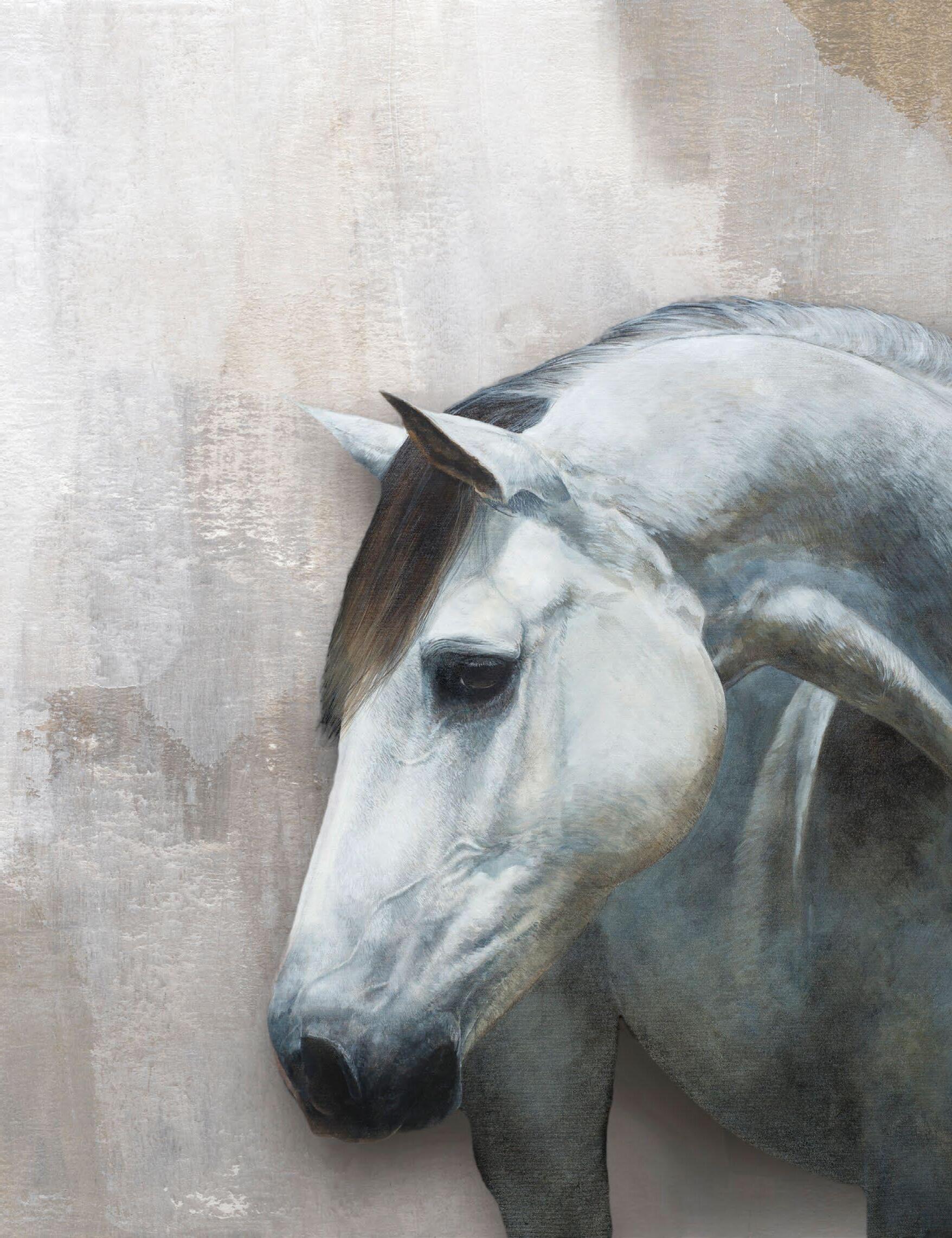
• The Fantasia (sponsored by Absorbine) — Equine Affaire’s signature musical celebration of the horse on Thursday, Friday and Saturday nights.
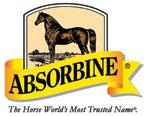
• Breed Pavilion, Horse & Farm Exhibits, Horses for Sale and Demonstrations — Enjoy meeting horses of all shapes, sizes, breeds, colors, and disciplines!

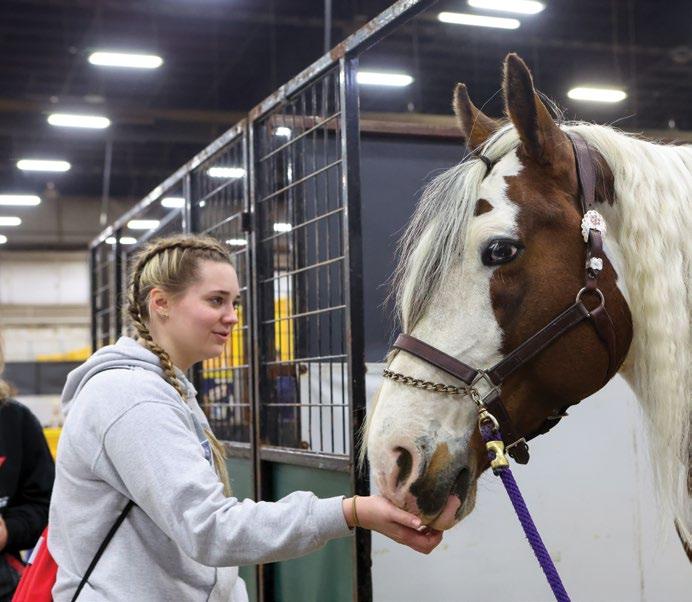
• Equine Fundamentals Forum — Educational presentations, exhibits, and activities for new riders and horse owners, young & old.

• The Versatile Horse & Rider Competition — A fast-paced timed and judged race through an obstacle course with $5,500 at stake!
• Adoption Affaire — Find and adopt your next horse at the Adoption Affaire.
• Youth Activities and much, much more!
For all you need to know, visit equineaffaire.com Proud sponsors of this Equine Affaire: © 2023 Equine Affaire, Inc. IN MAS S A C H USETTS years

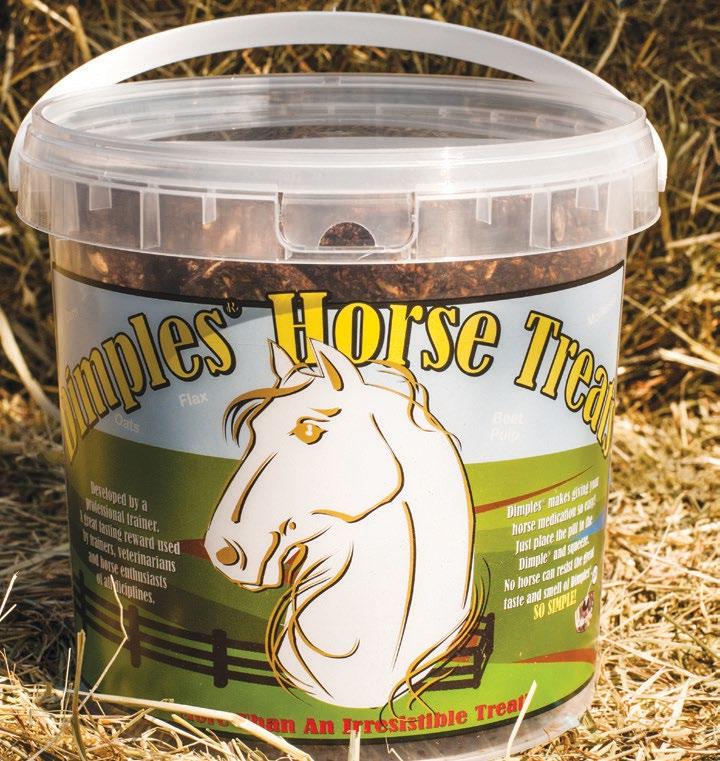
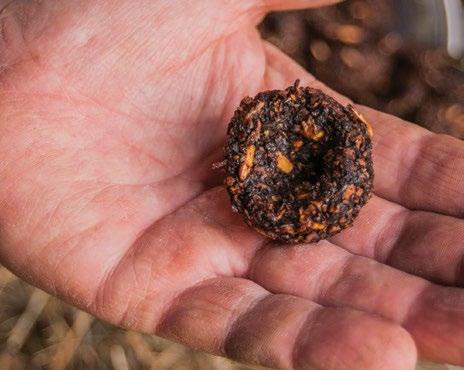
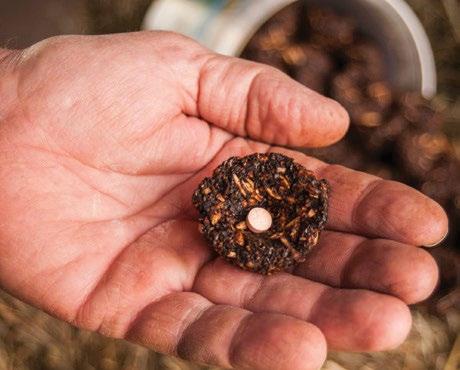
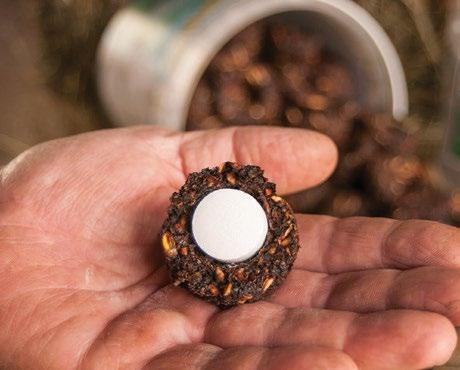
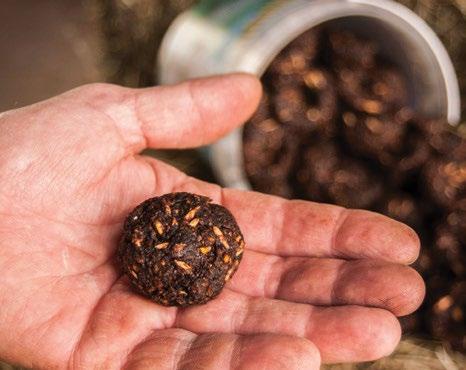
No Horse Can Resist! A Healthy Treat MORE THAN JUST AN IRRESISTIBLE TREAT makes easy! Aroma flax www.dimpleshorsetreats.com www.dimpleshorsetreats.com MORE THAN AN IRRESISTIBLE TREAT! The only sof t pliable horse treat with a “PILL DIMPLE” for administering medications! Dimples® Horse Treats make administering medication to your horses so easy! Simply place the medication in the unique dimple shape and squeeze the pliable goodness around it. Even the most finicky horses cannot resist the aroma and taste of Dimples® Horse Treats. Dimples® Horse Treats let you take the guesswork out of giving medications. Available at quality tack & feed stores nationwide! www.dimpleshorsetreats.com • 859-384-1058























 Malea & Dolly
Malea & Dolly






































 Erin Roland/United States Pony Clubs
Erin Roland/United States Pony Clubs


 Elizabeth Moyer/United States Pony Clubs
The largest Research Project Fair ever.
Elizabeth Moyer/United States Pony Clubs
The largest Research Project Fair ever.











































































 Courtesy Rebecca Sherer
Zachary Sherer, of High Lakes Pony Club in the Oregon Region, and Tarquin
Courtesy Alison LaCarrubba
Sophia Lieberman, of Hinkson Valley Pony Club in the Midwest Region, jumping Lion
Courtesy Tracie Johnson
Karsyn Terry, of Desert Hooves Pony Club in the Southwest Region, with Solero
Courtesy Alison LaCarrubba
Mae Lieberman, of Hinkson Valley Pony Club in the Midwest Region
Courtesy Rebecca Sherer
Jacqueline Sherer, of High Lakes Pony Club in the Oregon Region, and Jedi Mind Trick
Courtesy April Wilde
London Wilde, of Cardinal II Pony Club in the Carolina Region, piloting Mateo
name of horse.
Courtesy Rebecca Sherer
Zachary Sherer, of High Lakes Pony Club in the Oregon Region, and Tarquin
Courtesy Alison LaCarrubba
Sophia Lieberman, of Hinkson Valley Pony Club in the Midwest Region, jumping Lion
Courtesy Tracie Johnson
Karsyn Terry, of Desert Hooves Pony Club in the Southwest Region, with Solero
Courtesy Alison LaCarrubba
Mae Lieberman, of Hinkson Valley Pony Club in the Midwest Region
Courtesy Rebecca Sherer
Jacqueline Sherer, of High Lakes Pony Club in the Oregon Region, and Jedi Mind Trick
Courtesy April Wilde
London Wilde, of Cardinal II Pony Club in the Carolina Region, piloting Mateo
name of horse.





















